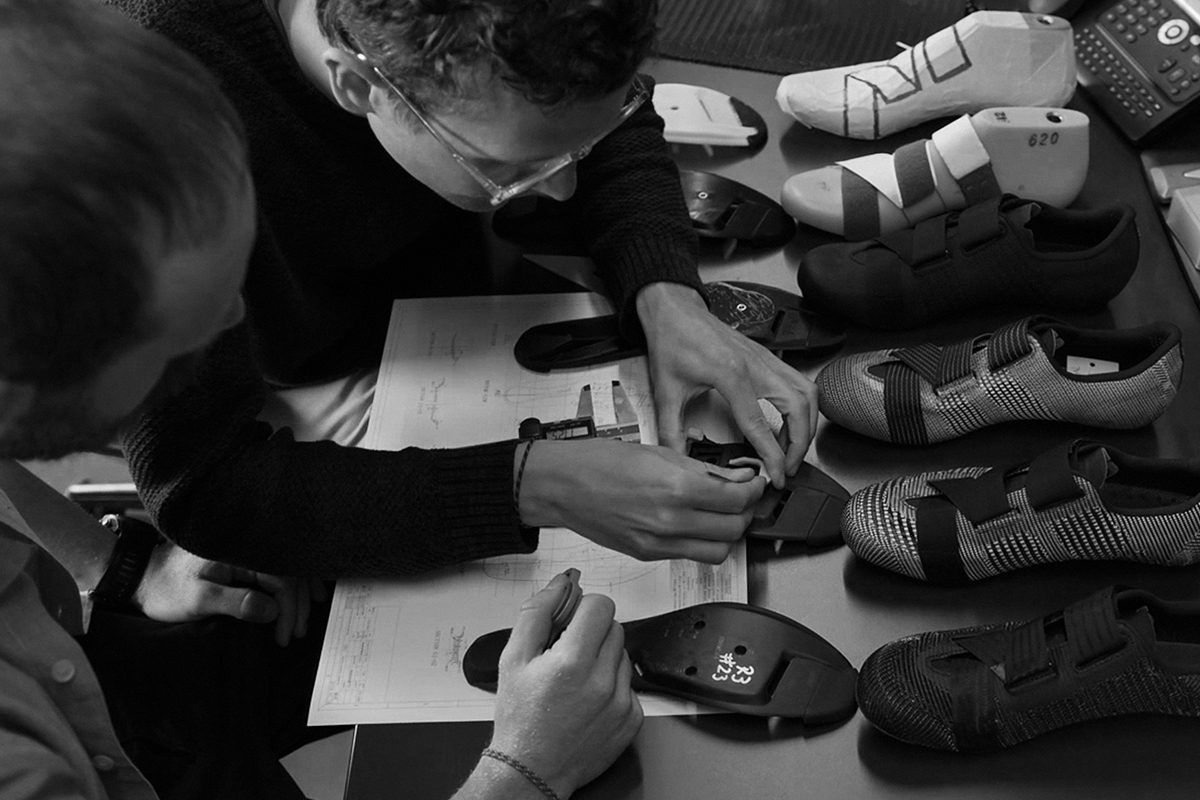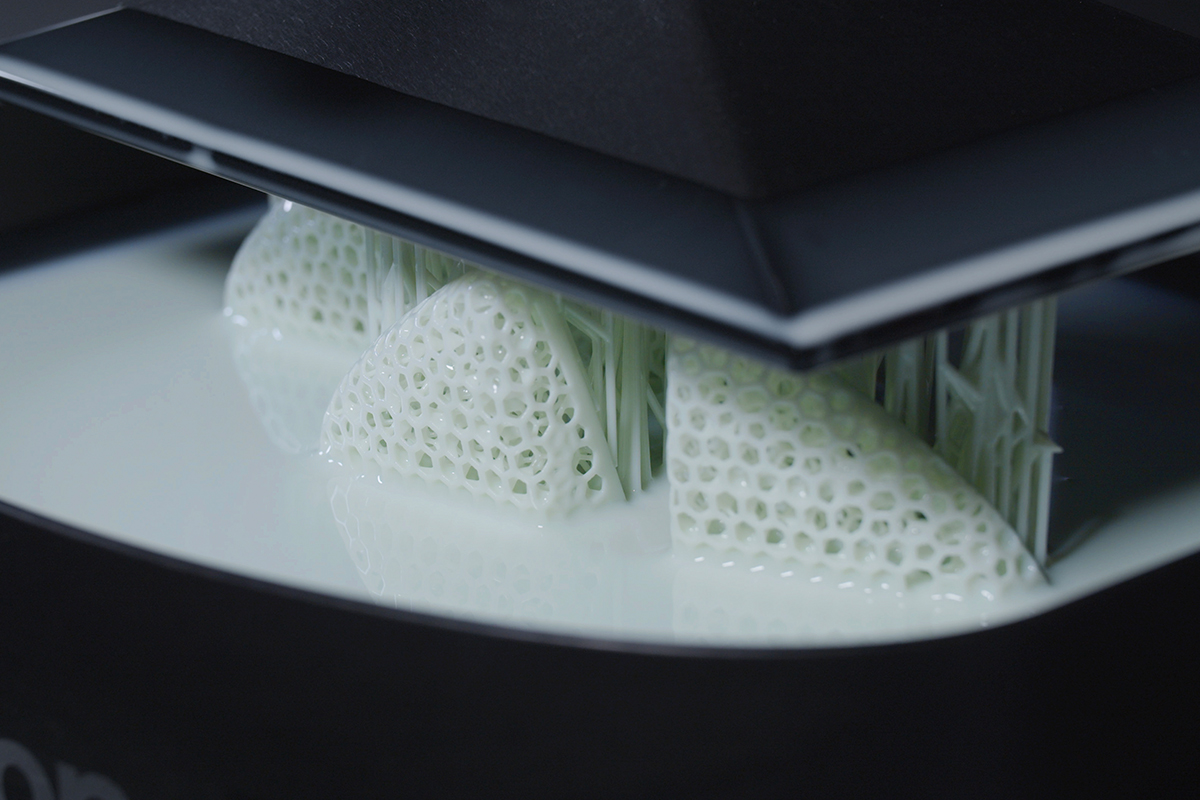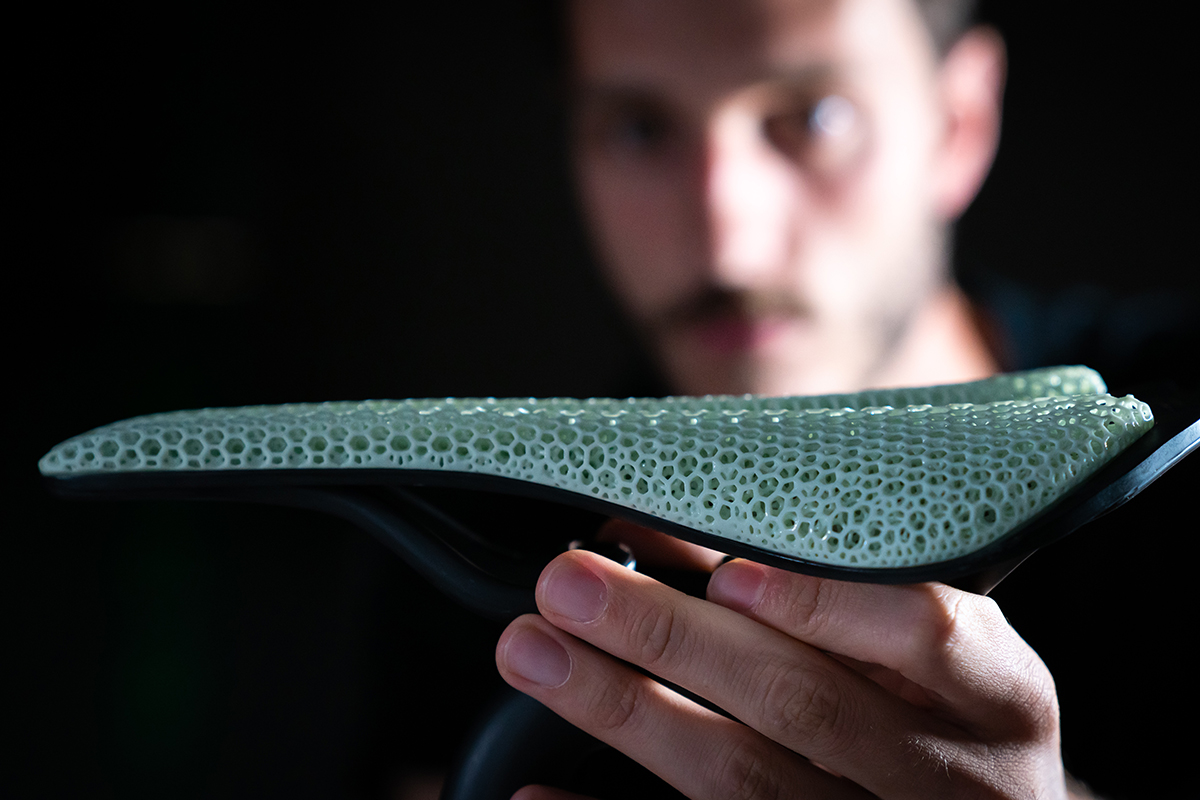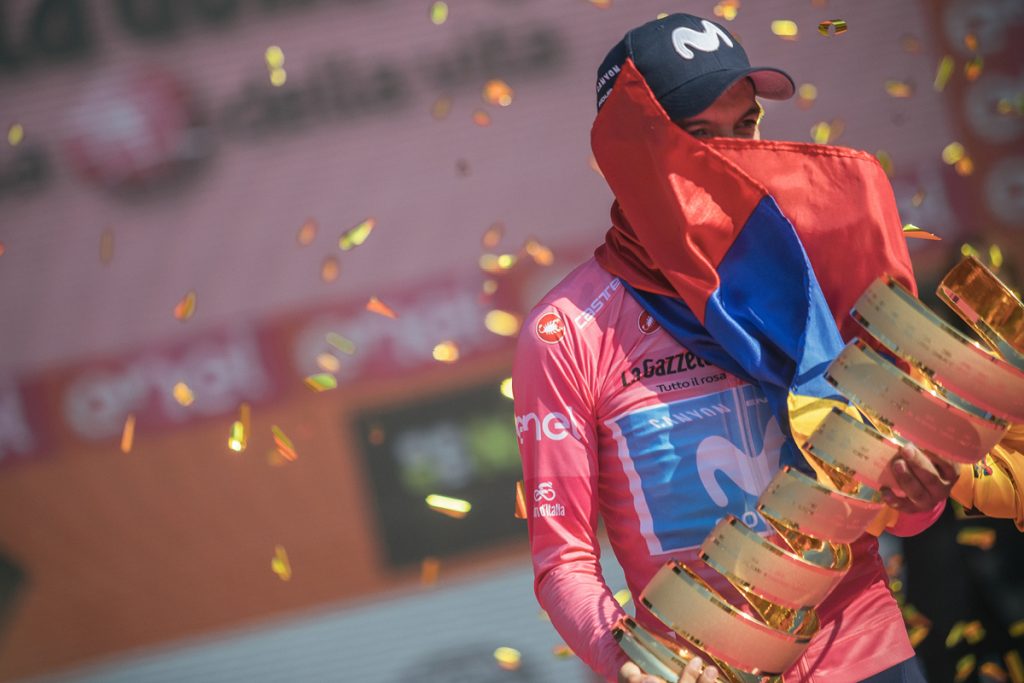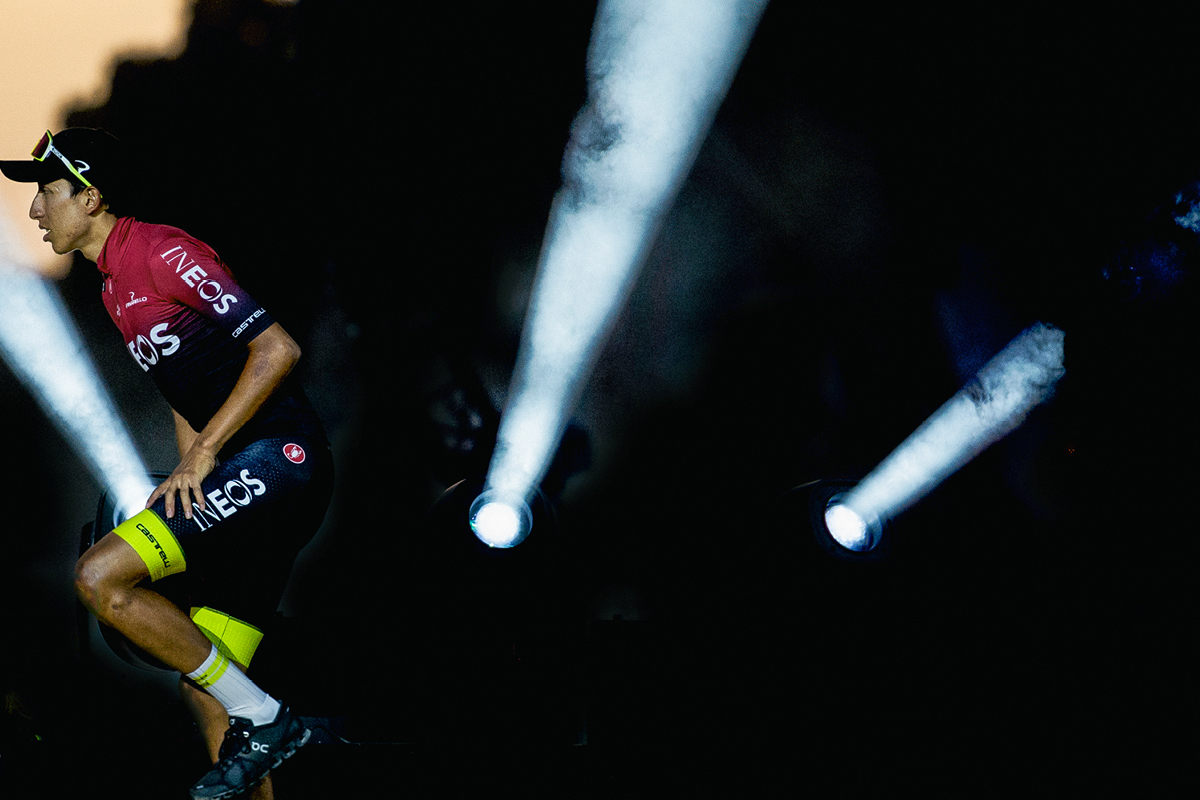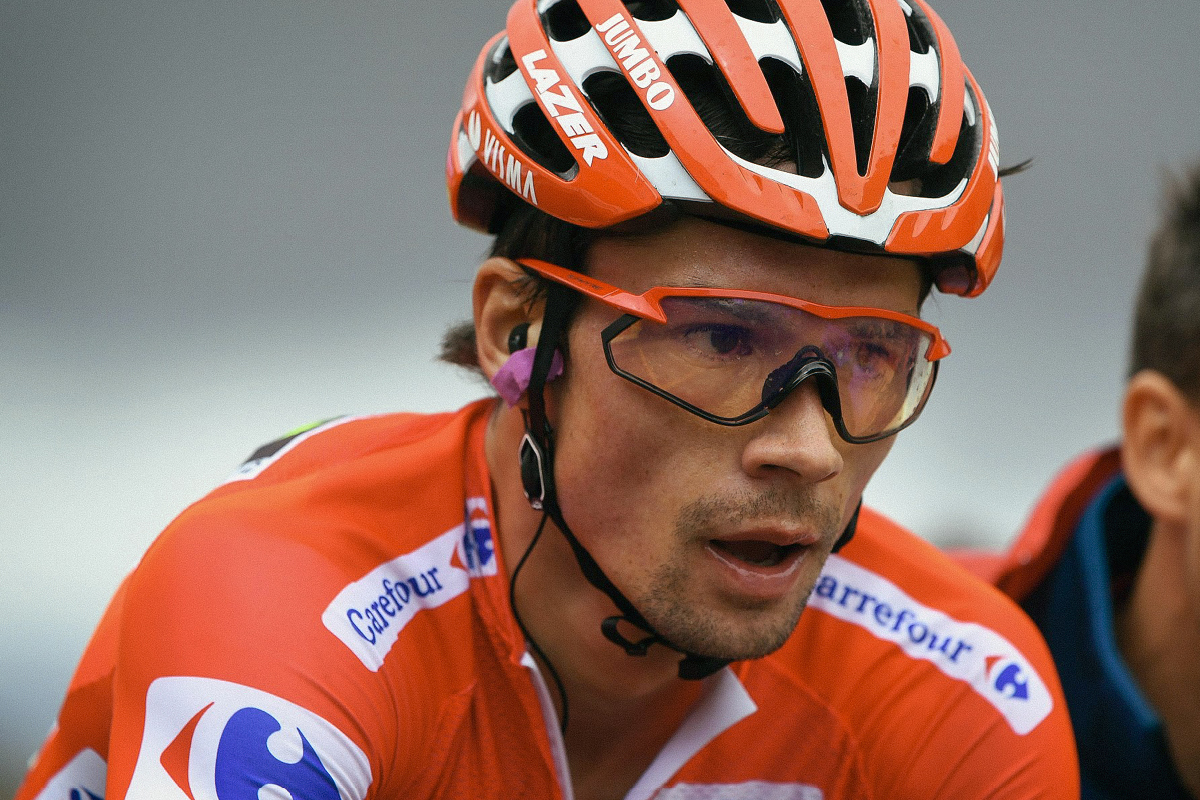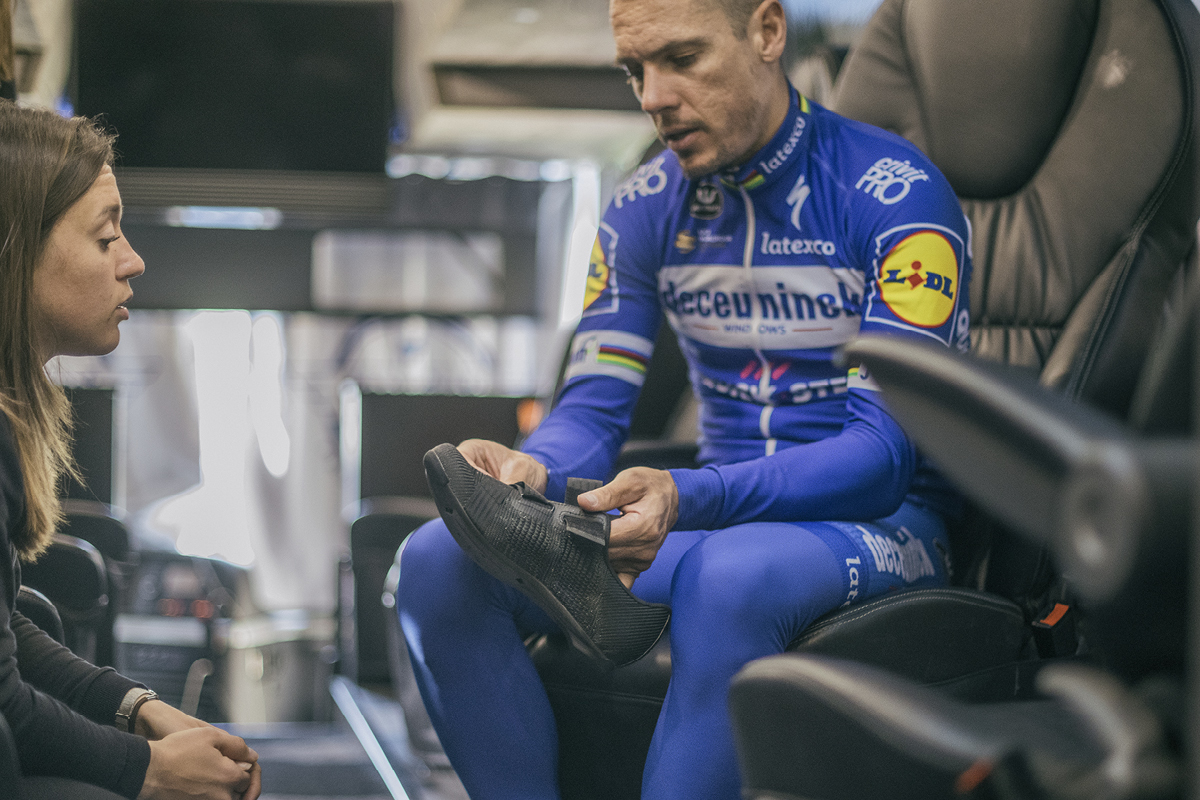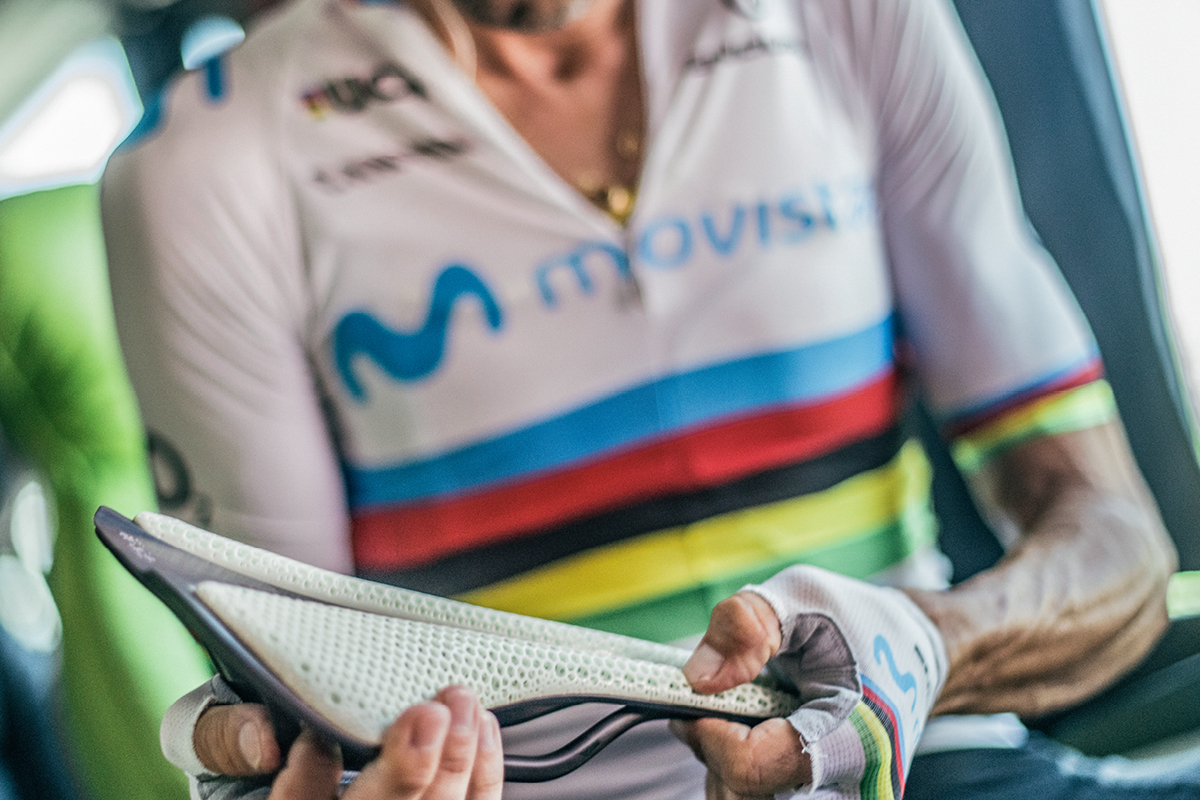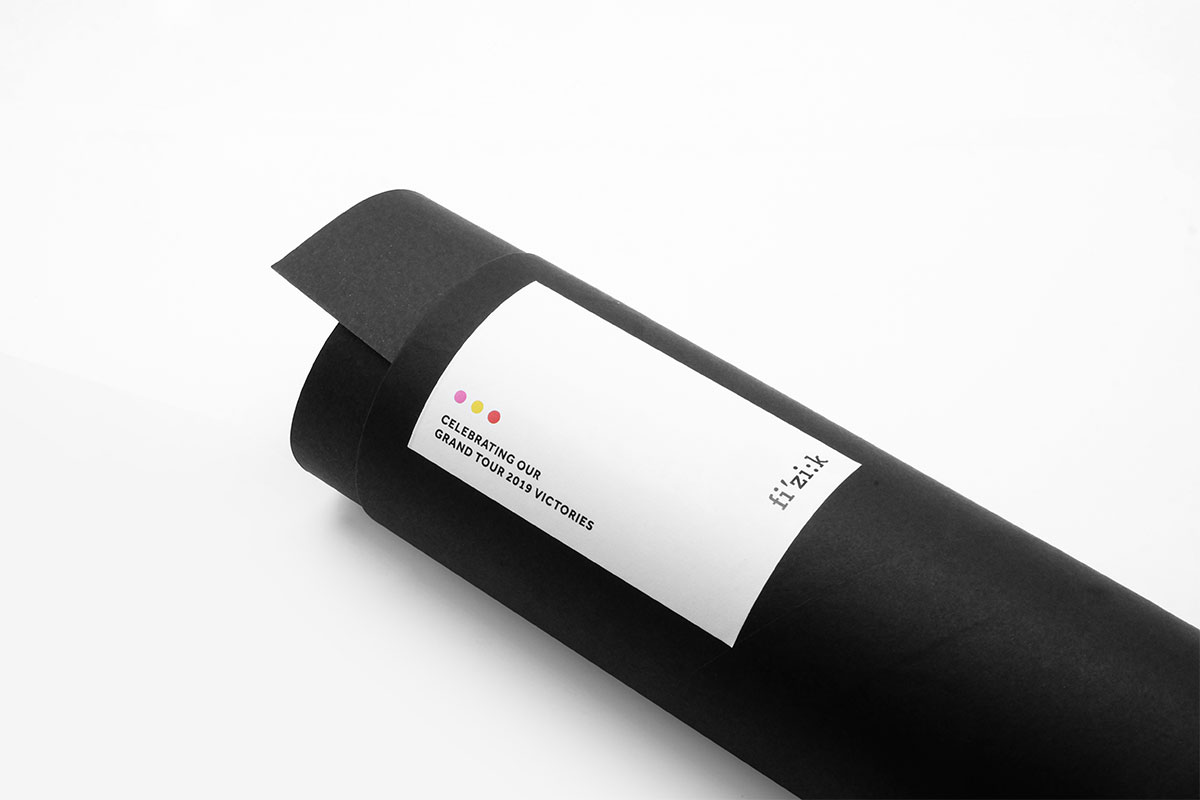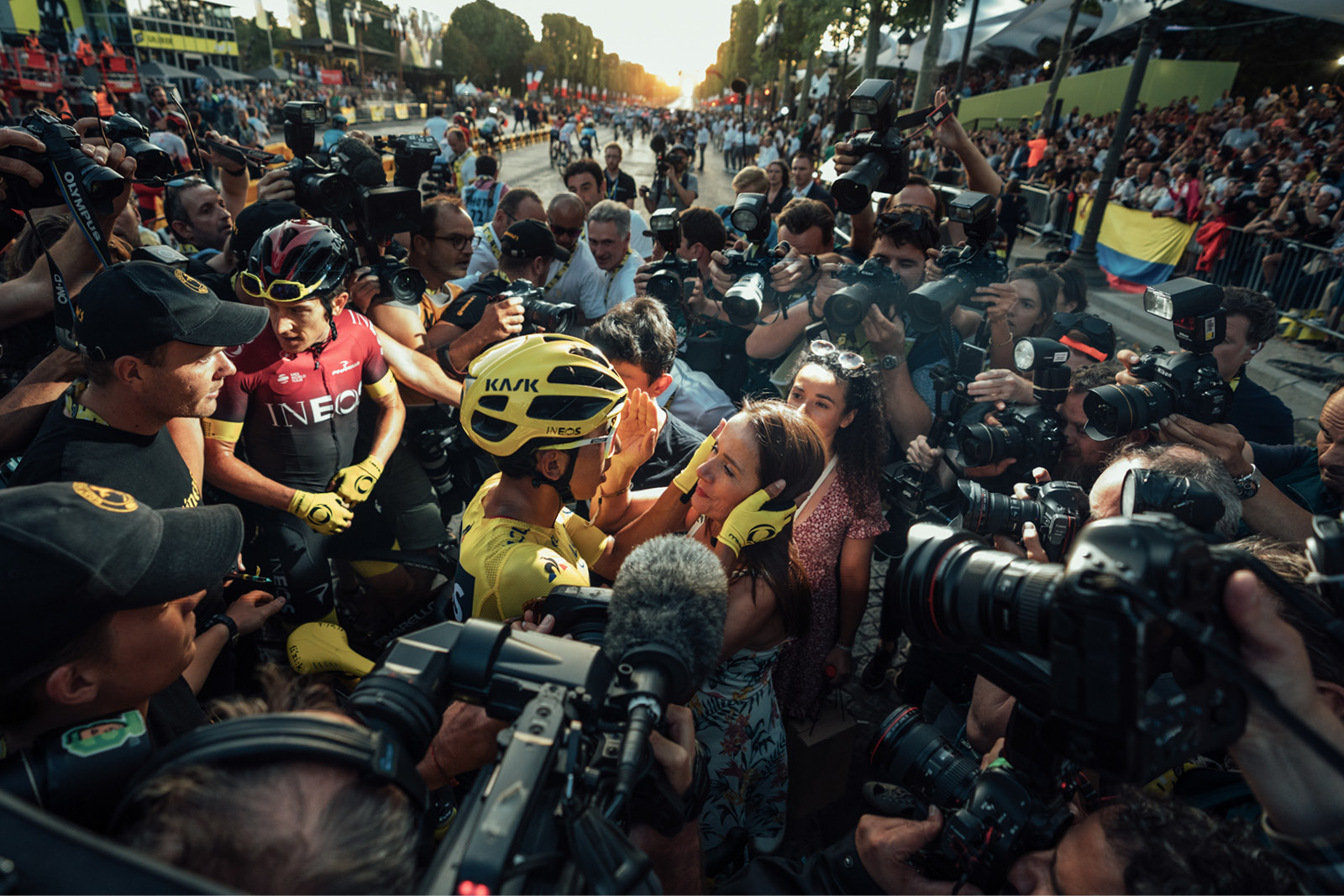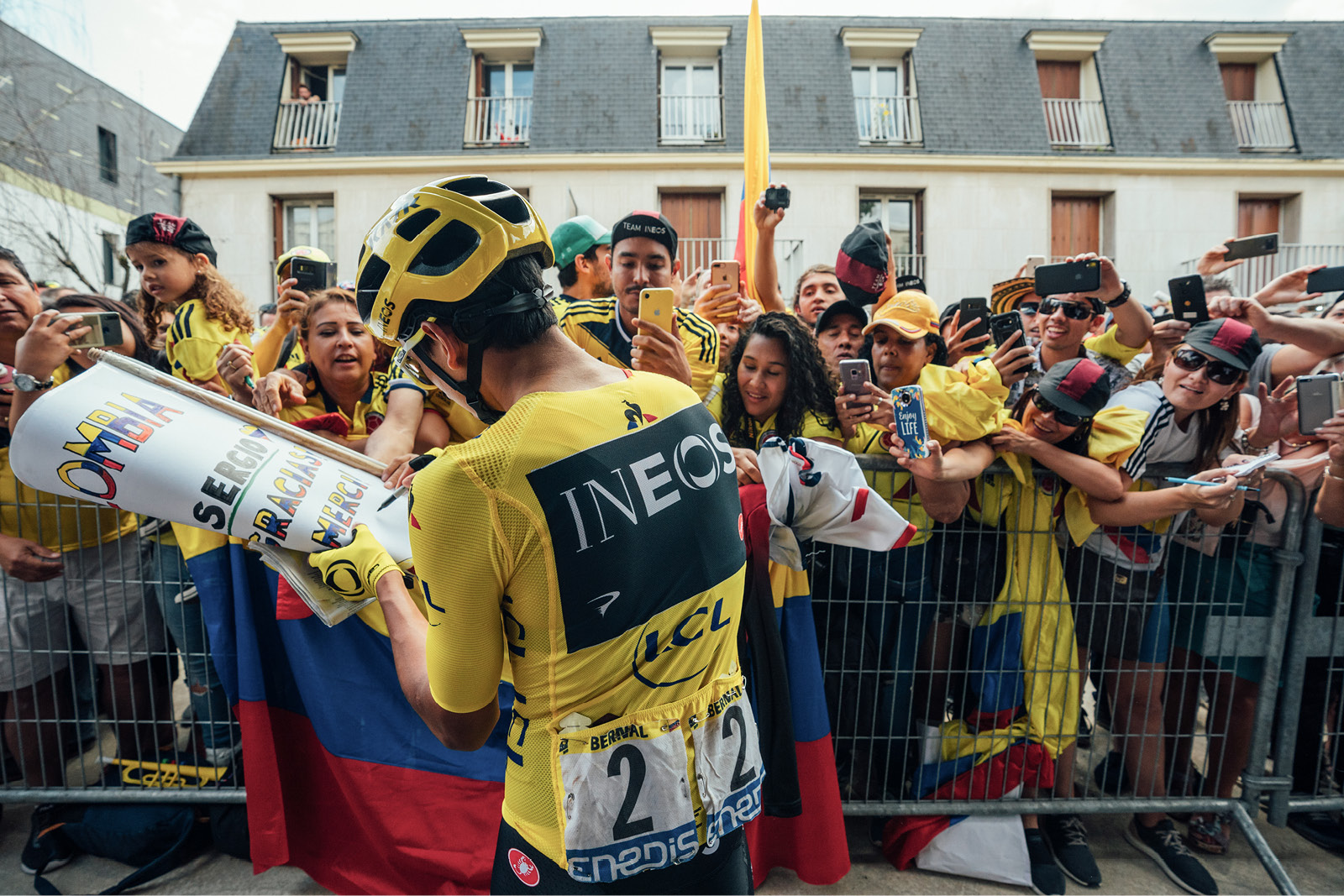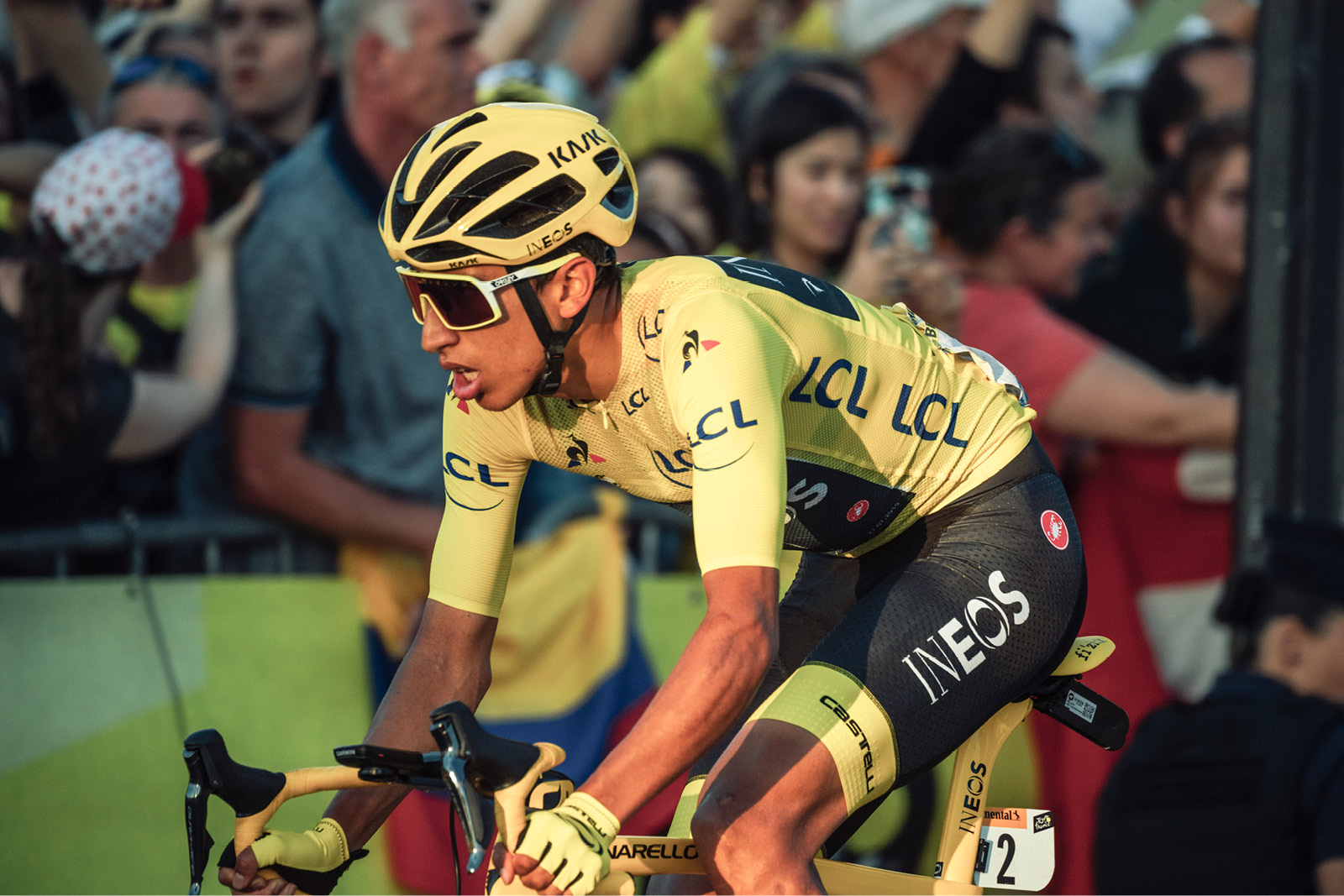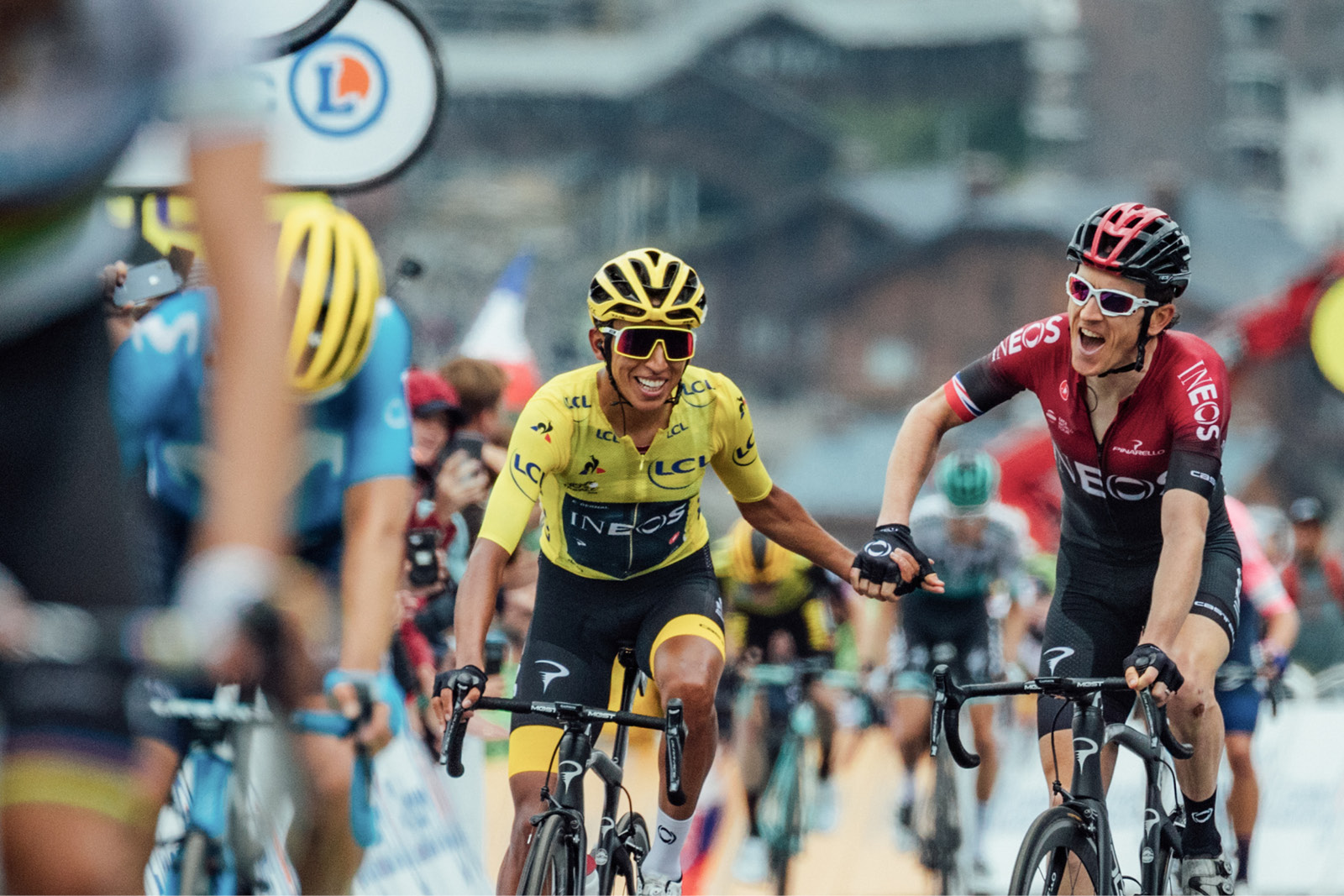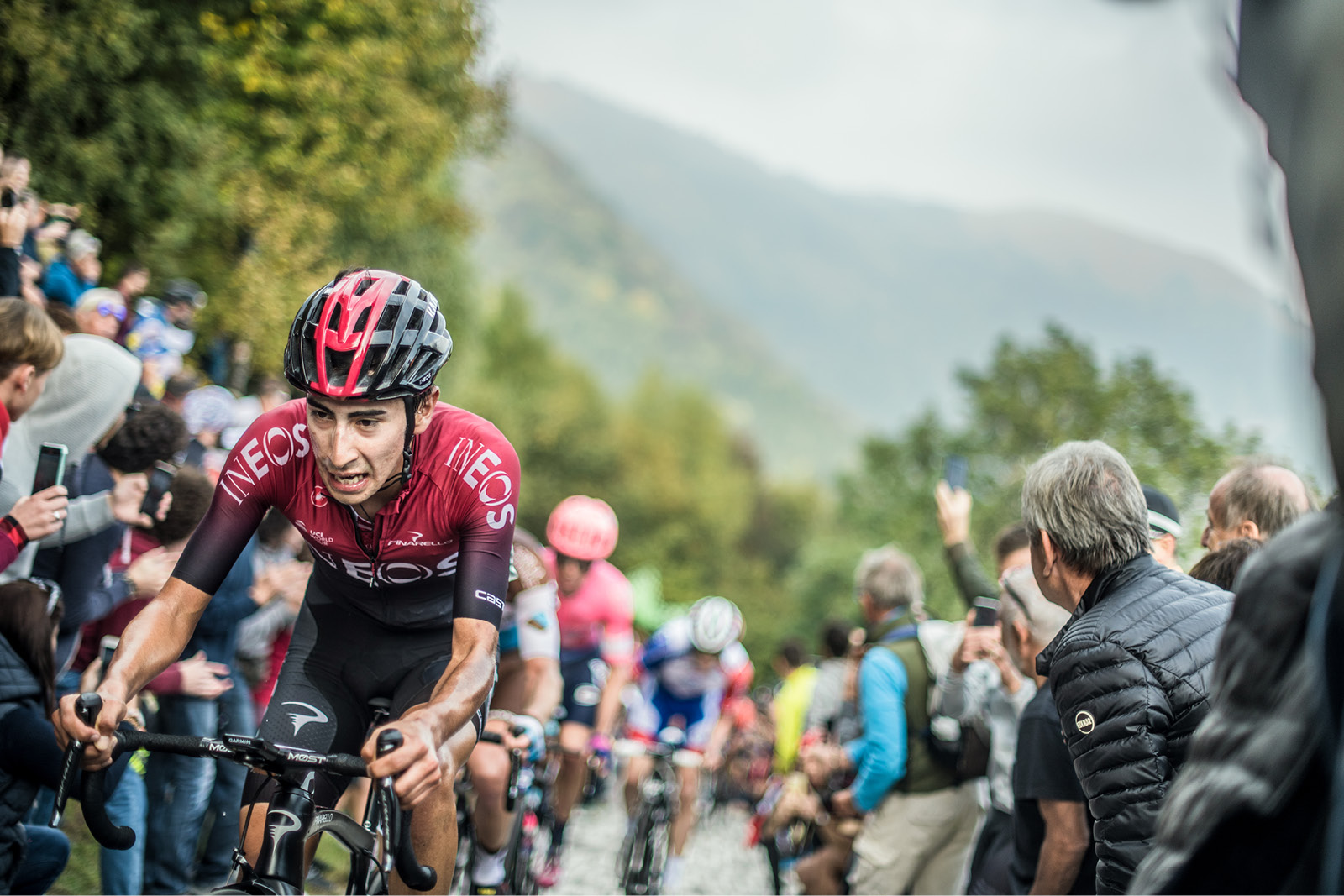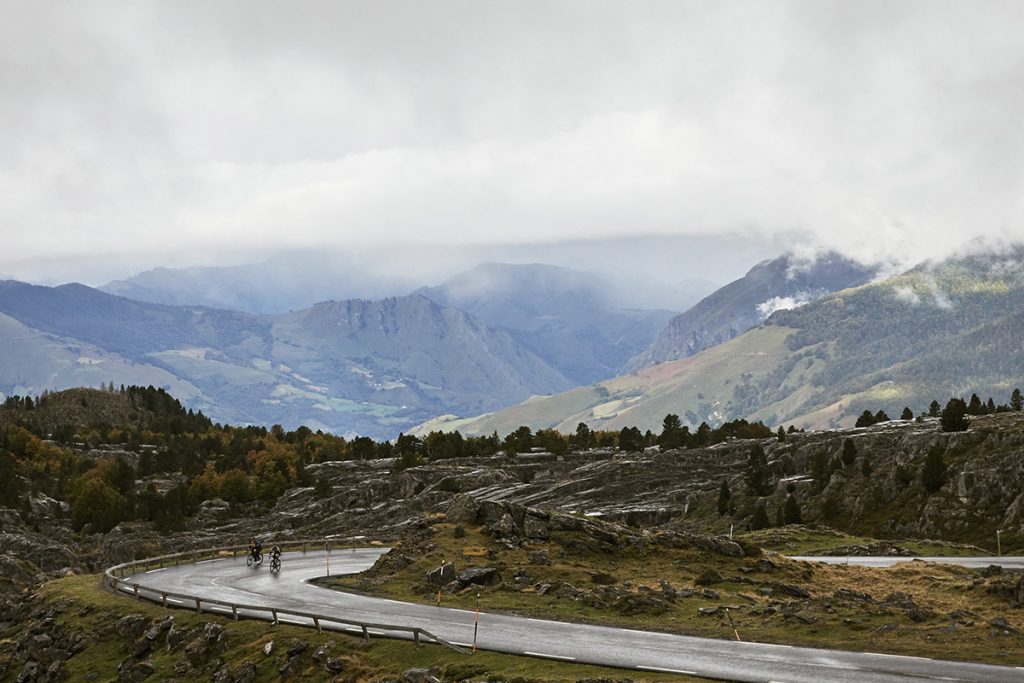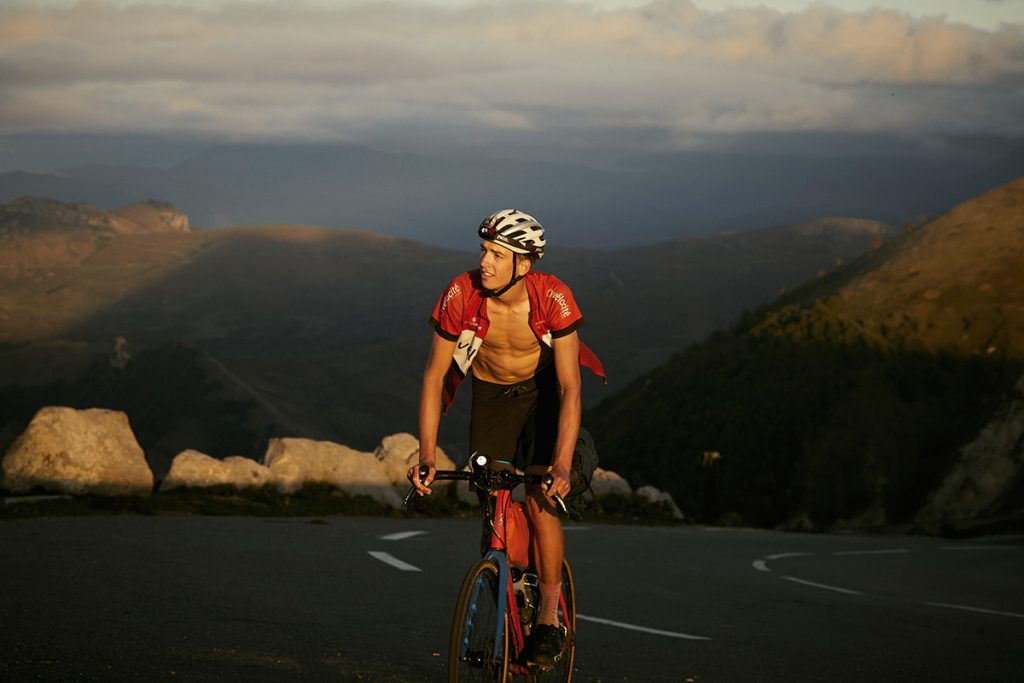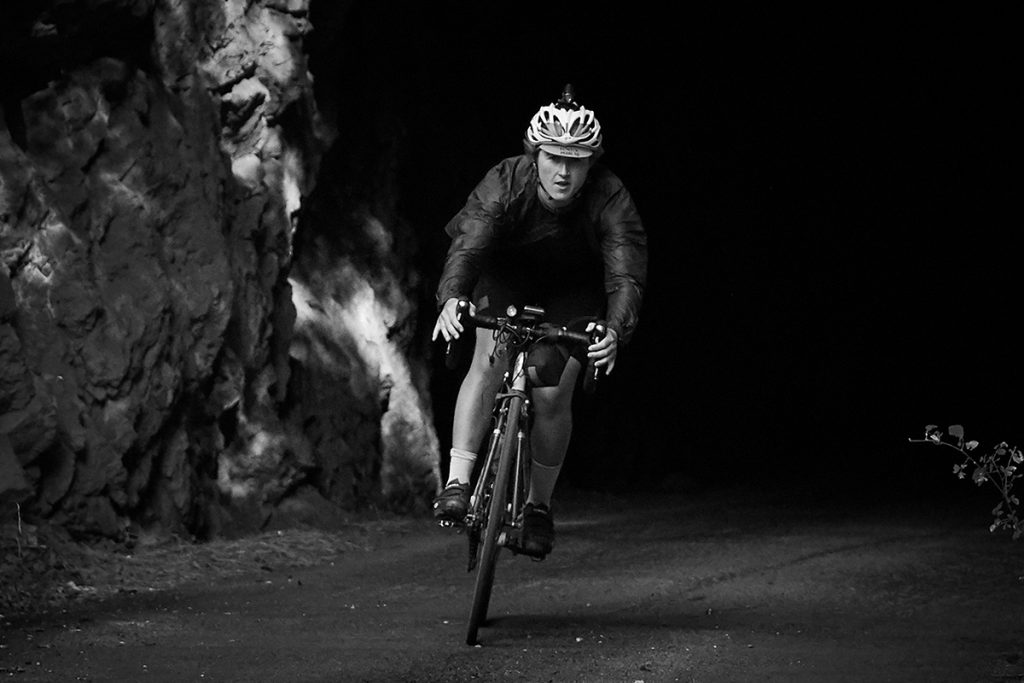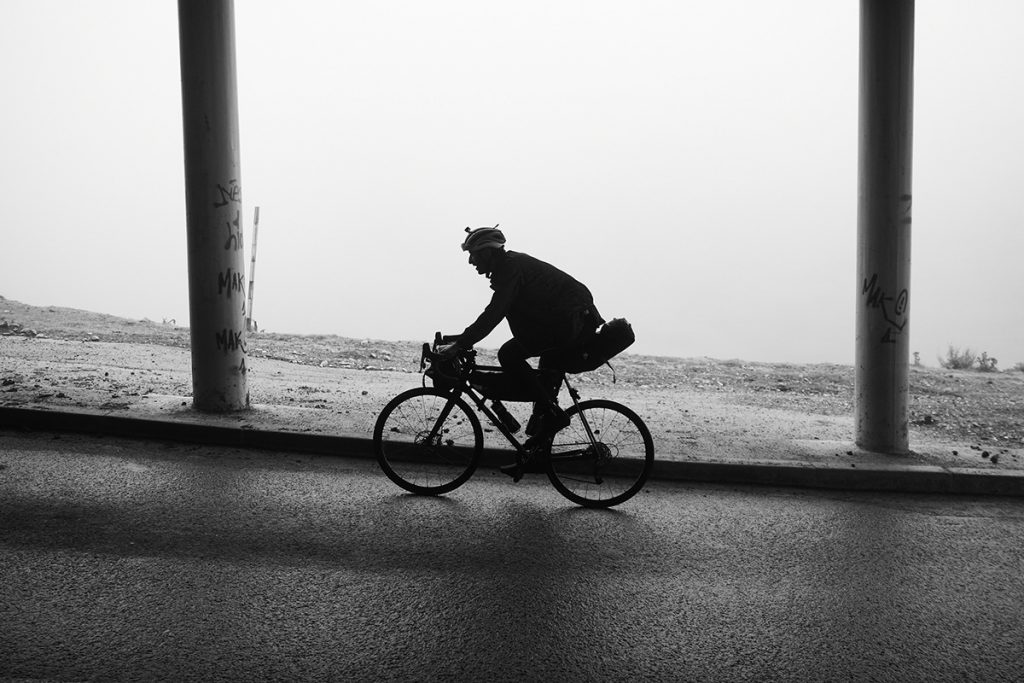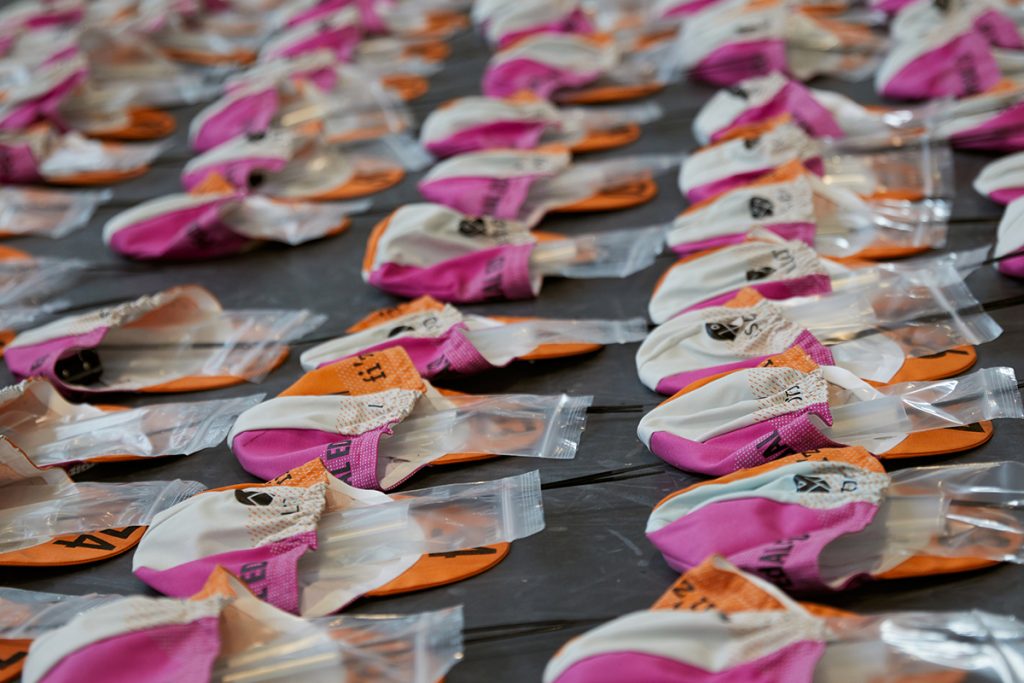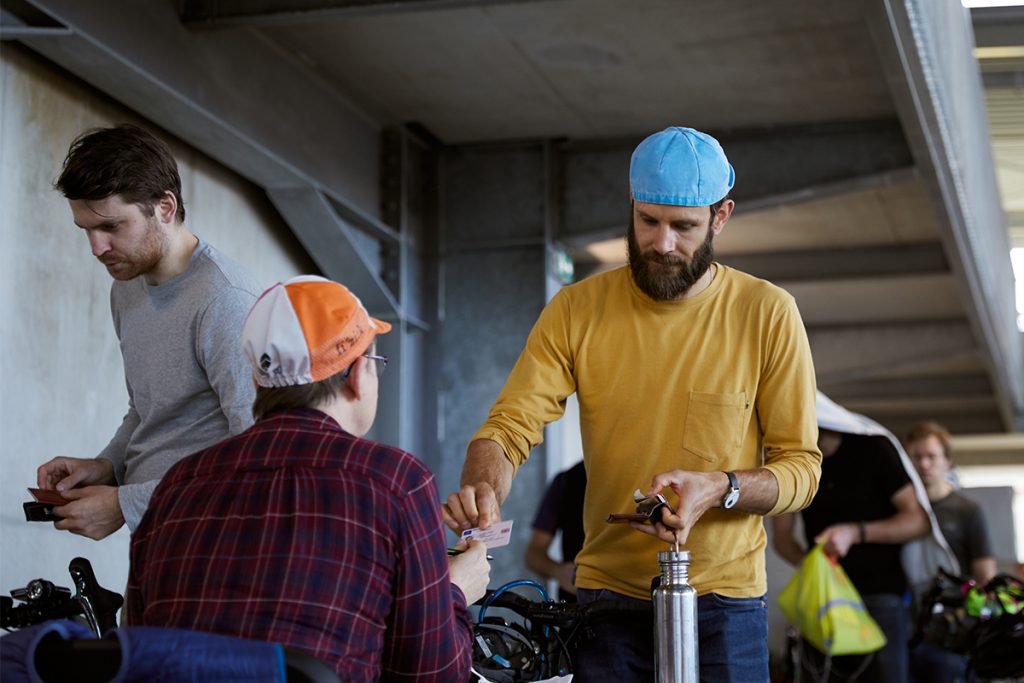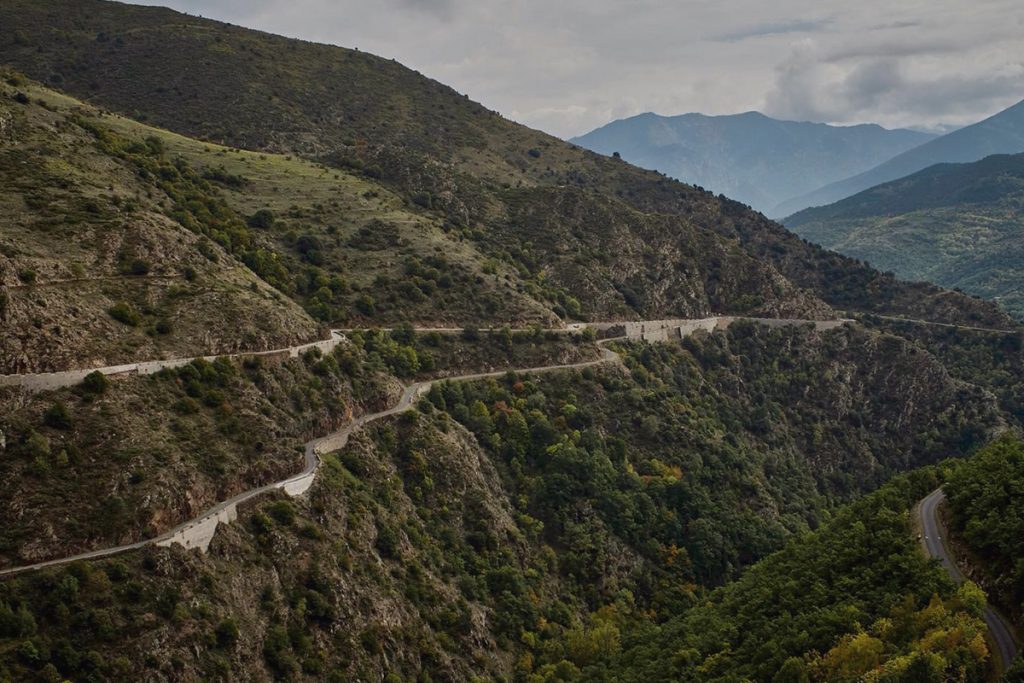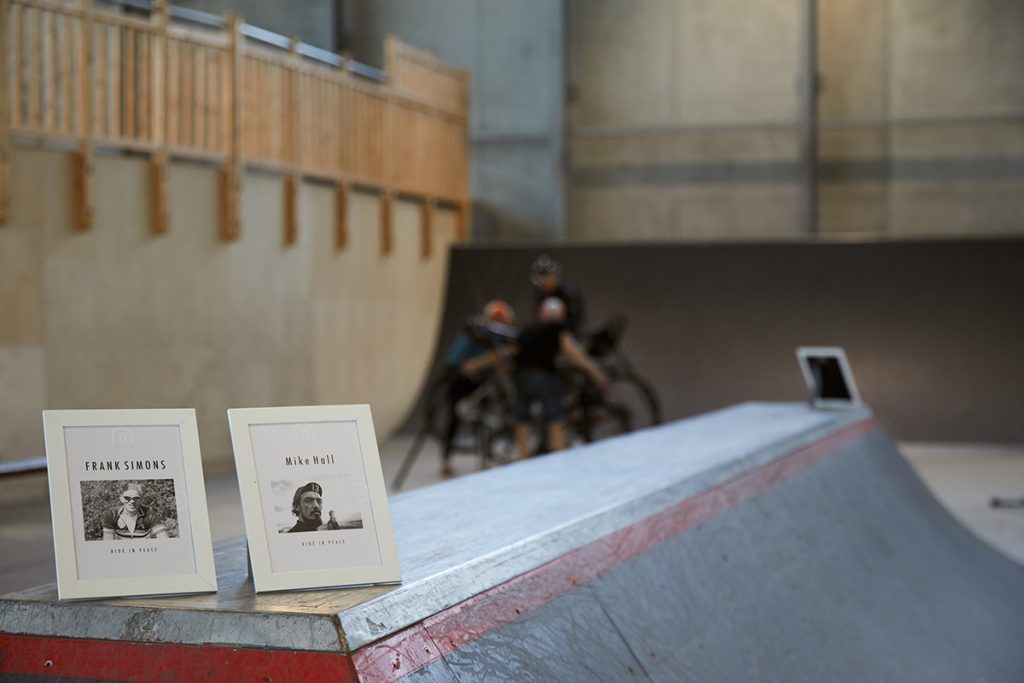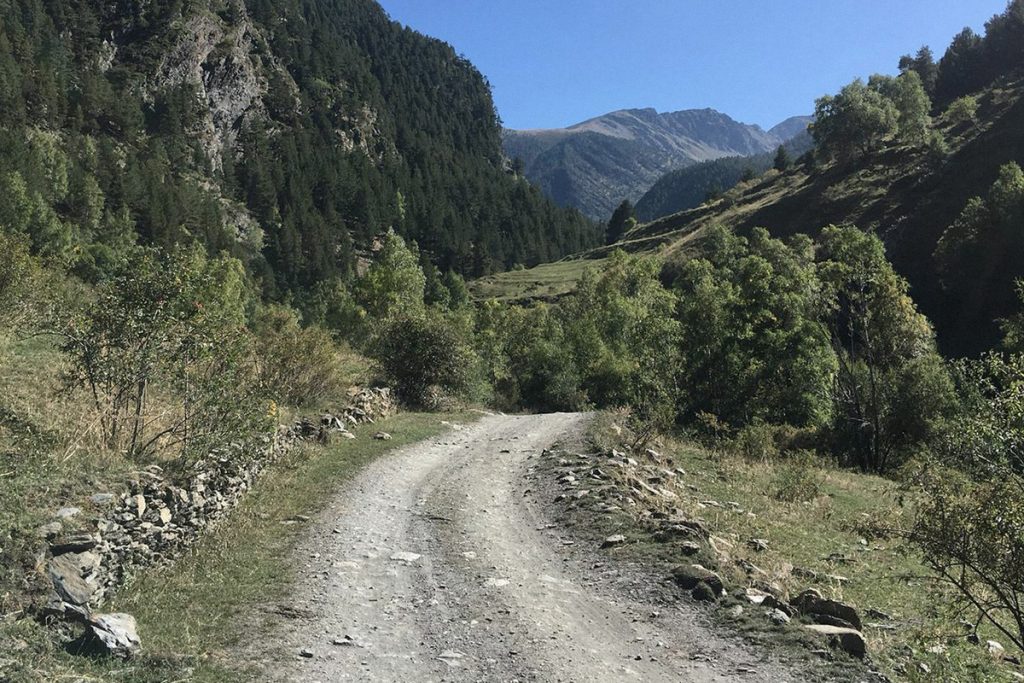When the 2020 road racing season finally kicks of this fall, it will almost certainly look quite different than in years past. As riders prepare in the runup to the first races, training has also taken on a different form, with group rides in the great outdoors swapped for solo spins inside and training camps traded for time at home with family. To find out more, we spoke with Primož Roglič, last year’s Vuelta winner and the first Slovenian to claim Grand Tour victory, to ask how he’s been staying physically and mentally fit as well as what training means without his fellow Jumbo-Visma teammates. First off, can you introduce yourself? I’m Primož Roglic. I’m 30 years old and Slovenian. Where have you spent this period of global quarantine? Can you tell us a bit about where you live? I spent the whole lockdown at home in Slovenia. I am fortunate to be able to live in the midst of greenery and in nature, so I have not suffered much from having to stay at home. Instead, I tried to convey the message to others that you had to stay at home, It’s a question of respect for yourself and for your neighbor. What has training looked like for you? Thanks to Zwift and the rollers, I was able to continue pedaling, even without being able to train outside. Obviously, it was a completely different workout. I never really liked the rollers, I always preferred to ride outside, even in winter when it is cold or in bad weather. It was strange to be able to train solely and exclusively on the rollers for more than forty days. Some days, I even had more than two sessions a day. You need to be very focused to be able to hold on to the rollers for more than three hours. Although with Zwift you seem to be pedaling somewhere real, it’s not the same as the wind in your face, and the fatigue isn’t the same. I cycled every day with my child who enjoyed holding my water bottles, and this was the best thing about riding inside. Are there any particular Zwift routes you recommend? I don’t feel like recommending any virtual path. Ride outside, outdoors, be careful, but don’t give up the pleasure of freedom. What fizik products are you riding? I have been riding with the Antares 00 saddle for three years now. I like the stiffness of the saddle and its lightness. These two factors are fundamental for marginal gains when you are going uphill and every small component can make a difference. The thing I like most about fizik is that I can work with innovative people who listen to my feedback to try to improve continuously. The Adaptive saddle fascinates me a lot. I think that with this new product, fizik has managed to get noticed even more as a brand aimed at absolute innovation. I believe that everyone needs to have a dedicated product for themselves, and with this saddle in a few years, everyone will be able to have an exclusive rigid performance saddle, suitable for any type of need. How have you been staying mentally fit during this time? The lockdown was a very strange moment for an athlete of my caliber, who is used to being away from home for training at least four hours a day and staying away from home for competitions, retreats and commitments with the team for more than 250 days a year. Usually, I’m only off for a few weeks in October, and I’ve never had the chance to spend so much time at home with my family. It was pleasant to spend time with my little boy, who was born last year shortly after the Giro d’Italia. I had the opportunity to be able to spend a lot of time with him, to see him grow up and to be a dad full time. I can say that, thanks to my family, I have not suffered so much. What are you most looking forward to from the upcoming racing season? It will be great to get back into the thrill of competition, to feel the energy and excitement and to ride with my teammates again. I expect it will be a bit bittersweet to leave my home and family and our new normal, but I’m eager to push myself again and to see how this unusual training season pays off. As we too eagerly anticipate the excitement and familiarity of the pro cycling season, we wish Primož and all our fizik riders, whether indoors or out, happy riding and a fast return. Each year, cycling’s Cobbled Classics mark the beginning of the race season as riders compete for victory and glory across some of the sport’s toughest single-stage events. Battling the elements, uneven terrain and unwavering competition, those bold enough to take to the start in Paris or cross the finish line in Liege join more than a century of tradition as they answer the call of the cobbles. In conjunction with our new Les Classiques limited-edition shoes inspired by the mud and dust of these gritty Spring Classics, we introduce the latest fizik artist print, “The Call of the Cobbles.” Centred around a simple call to action and printed using classic letterpress techniques, “The Call of the Cobbles” combines boldness with tradition, much like the Cobbled Classics themselves. To celebrate such a rich race history and capture the spirit of Les Classiques, we enlisted the help of an equally historic institution: Tipoteca Italiana. Part museum, part archive, part printer’s workshop, Tipoteca Italiana is housed in a former hemp mill just north of Venice and serves as a space for educating visitors and preserving traditional Italian printing equipment, practices and knowledge. Guided by this knowledge, we created “The Call of the Cobbles” using centuries-old methods to honour some of cycling’s most historic and celebrated races. Along with the special-edition Les Classiques Collection, our latest print is available now in limited numbers for any rider ready to answer when they hear the cobbles call. Meet the newest fizik team to talk training, testing, team-building and how to make the best of the lockdown, in our exclusive interview. At the start of their first year riding fizik saddles the Orbea FOX Enduro Team’s four riders and manager Primož Štrancar had completed their pre-season test sessions and were all set to go to the first round of the 2020 EWS, when the Covid-19 pandemic bit the season’s plans. We first caught up with the guys at their – muddy – camp in Lousã, Portugal, where they had been testing their new Alpaca saddles, and then again while they’ve been making the best of training during lockdown. Here’s what they have to say about the current situation, riding with their new fizik equipment and raring to go racing when the season kicks off! Primož Štrancar has raced in, and led, teams across mountain bike disciplines and was EWS Master Champion just a few years back. With riders Vid Peršak and Gabriel Torralba being joined for 2020 by Edgar Carballo and double EWS race winner Damien Oton, we asked him how it’s going with the new crew… “I like the structure of the team this season,” the Slovenian told us. “It’s a combination of experienced riders with a mix of youngsters. The atmosphere in the team is positive, everyone knows what to do. Lousã was our first camp where we could all ride together. We were testing the suspension and we had the opportunity to try out various components,” said Štrancar. The team were keen to use the opportunity to test their new Gravita Alpaca – designed with a slimmer profile and more rounded contours for fast fore-and aft adjustments on aggressive downhill riding, and Terra Alpaca – made with a wide, flat nose and slightly waved tail, specifically for all-mountain and enduro riding. With the four riders of varying levels of experience, different heights and weights and, of course, with their own riding styles, letting them loose on the saddles in these tough conditions is a great test, providing useful insights and endorsements. “The new fizik saddle is great,” said the experienced Damien Oton. “First they’re looking great. I tested the Gravita Alpaca. When you touch the saddle it looks very hard, but it is very comfortable.” Edgar Carballo is on the same wavelength. “The fizik Gravita Alpaca, I think that they have a great commitment to comfort, aesthetics and it’s very compact. The Terra Alpaca also looks really good. I will test and let you know!” Gabriel Torralba has been riding with both the Gravita Alpaca and the Terra Alpaca and comparing the two. “They both look really good,” reports the 22-year-old, “but after testing for a few days I have the feeling the base of the Gravita Alpaca is a little flat for me. I feel more comfortable with the Terra Alpaca.” Looking forward to the enduro season when it gets underway, the team are familiar with the demands of combining timed downhill sections with longer transition stages. EWS guidelines say: ‘Special Stages should aim to contain a maximum of 10% ascent and at least 90% descent’. To succeed, gravity-competition ability must never be compromised, but XC-style pedaling efficiency and trail-level comfort also matter so components, such as these fizik saddles, are specially designed. “Enduro is very specific,” explains Štrancar. “A rider on a timed stage hardly sits: the saddle is used more as a checkpoint of where the bike is, and the dropper seatpost is in the lower position almost all the time. It’s completely different when it comes to long transfers to the start of the timed stages. This is where we need to provide the athlete with the comfort, efficiency and energy conservation. This is important because riders are in action for up to six hours a day.” The young Slovenian Vid Peršak tested both fizik saddles with this challenge in mind. “During the stages I use a saddle especially when the climbs in between are mellow and flat,” he told us. “I use this time to sit down and put all the power in the pedals so I’m not using that much energy. “I was riding for a week with the Gravita Alpaca which is a great choice from the downhill perspective. Then in Lousã I had a chance to try the Terra Alpaca which gave me a more comfortable position on pedaling, even after a long time. On the downhill I didn’t notice any problem with moving back and forwards on the saddle so I feel confident to give this saddle a go for the season. “It’s very important for me to have a saddle perfect fit for long climbs to get to the stages – that is where I feel I get the most benefit from the Terra Alpaca.” The French campaigner Oton has similar priorities: “That 10% is only within the stage, and anyway we’re riding this 10% full gas, standing on the pedals, so during the stages we’re almost never sitting on the saddle. “But to get up there to the top of the stages we spend hours and hours on the saddles… to me comfort is essential ! I don’t look at the weight of the saddle first but at its comfort. Of course if we can have both it’s better, but for me it’s comfort first.” “This was my first ever real test camp but it seems like it helps a lot,” said Peršak. “Not only from testing the products, but also from the team building side. “We got to know each other more and that’s how we will work as a team during the whole year.” “The test camp in Lousã was very helpful… the conditions were really hard. Wet, windy, rain… Complicated to find this at home,” said the young Spaniard, Torralba. “Definitely, it’s good to train and test with these conditions. We are going to have a lot of races with similar weather.” Edgar Carballo, his more experienced compatriot, shares the mood: “My first time with Damien Oton we connected perfectly. With our mechanics, manager, timekeeper and cameraman, it’s like working in a family.” Three-times Enduro World Series runner-up Oton is new to the fizik-sponsored team for this season – and he quickly found his place in the Orbea FOX Enduro Team family: “It’s a young team, but definitely a pro team. From my side I felt like home with my new partners, manager and mechanic. Everything was perfect. It was a tough track with tough conditions but it was perfect to train on.” In those wet, muddy conditions they also tested the fizik Terra Clima X2, which, says Štrancar, “received a 10/10 rating from all four riders!” But, just as the team were looking ready to race, the 2020 season got turned upside down by the pandemic. Like the rest of us, the guys had to make some rapid changes… The team’s general goals of the season – success and strong placings in the EWS, E-EWS, and national competitions – are largely on hold, and the riders’ specific aims are to be reevaluated when the true shape of the racing season becomes clear. “We know that most athletes were at their performance peak, because lockdown happened just before EWS in Colombia,” explains Primoz Štrancar. “It was supposed to be a block of two EWS races: Colombia and Chile.” The idea, for the Orbea FOX Enduro Team, like their fellow pro and enthusiast riders alike, has been to make the best of the lockdown period. “Together with the riders and their coaches we decided to drop the quantity and intensity of training… actually right after cancelation of the first two races the athletes took a week off, like they were in a preparation period,” continues the team manager. “Then we adopted the appropriate training for each country – our athletes are living in Spain, France and Slovenia – and their training follows the rules for each country. More or less all training is in or around the house. Even if it’s sunny outside there is a home trainer in action, and a lot of core exercises with weights.” “My training routine hasn’t changed too much,” says Vid. “I am pretty lucky to live in Slovenia where government restrictions aren’t that bad and I can still go out ride bikes alone. But I’ve stepped back to focus more on some old injuries and weaknesses in my home gym to get my body in perfect shape when we get a green light.” “I do some gym every day with my own material, and I try to improvise new stuff with my coach,” says Damien. “I also work on the home trainer in my garage. It was fun the first four weeks but now I need to go outside and ride my bike…” “The focus is on keeping the good performance from a month and half ago,” concludes Štrancar, “and just wait until things are clear, so then we can start with specific training.” The team are in constant contact with each other, including organized meetings where the agenda can cover a number of different topics. They use this to stick together and keep motivated, something that Štrancar says is a primary goal of the team. “We are lucky to have WhatsApp, Skype, Facebook and Instagram to talk together, we can speak about race decisions, the future, and know when we need to be ready to race!” says Oton. “Our team manager Primoz is here to tell us the decision taken by the EWS as soon as they know it. It helps a lot.” When it’s clear to go racing again, do the guys think the competition will be even more fierce? “Indeed!!” says Primoz Štrancar. “But I guess that the racing will change a bit… because all of humanity will change. Our sport will grow to the next level. This is that adrenalin which we are missing at the moment.” “I can tell you that my adrenalin will be way higher than a normal season and I think we are all going to be very excited!” agrees Damien. And it’s the same for Vid: “When we are back racing I expect to be more focused than ever. My motivation is still on a high level.” “Guys, fans, crowd, all the people who are in love with our sport. We are doing our best to perform at the highest level when the racing starts, says Primoz. “One thing which I am completely sure of is that we’ll see great things in the future. And because of this it’s worth withstanding a little more. Our future is bright!” We’ll keep you up to date with the Orbea FOX Enduro Team, whatever happens later in the year. But for now their mentality is best summed up by Gabi: “My goal is to achieve my best all the time,” and Damien: “The goal is to have fun. Fun is fast to me, we all know that,” and Primoz: “Respect for human beings will be at a higher level. But for sure, fighting for seconds will never die.” In November last year I got a call from the man behind Silk Road Mountain Race, Nelson Trees, asking me if I would like to photograph the first edition of the Pedaled Atlas Mountain Race. I jumped at the chance, as the Atlas Mountains have been on my radar for a few years now and someplace I would like to ride (and photograph) myself. There’s just something mystical about the deserts of Northern Africa. Or perhaps the curiosity of the race tapped into my imagination from books I read as a boy. It’s also like nowhere else I’ve ever photographed before: a unique combination of stark mountains and arid deserts alongside a vibrant culture that’s totally unfamiliar to me. This was to be the second ultra-distance bike race I’ve documented, having gotten my first taste in last years’ Trans Pyrenees. I figured at the time it wouldn’t be too much different, Or so I thought. Once I arrived, the heat I was just about right, but the roads… not so much! Those who know Nelson however, knew what to expect and showed up with mountain bikes with 50mm tires… Straight from the get-go even our trusty Fiat 4×4 was tested by the technical terrain, with many sections not accessible to us due to the deep sand, impossibly steep, rock-strewn tracks (really only fit for shepherds and their goats), river crossings and old, weathered, colonial-era roads. This forced the riders to dismount countless times and find alternative ‘hike a bike’ routes while we searched for detours. This terrain took its toll on the riders, and their bikes, with 69 having to scratch – some due to sickness but many down to mechanical problems. But not only the round 120 riders that finished the race got to see the beauty that Morocco’s Atlas Mountains have to offer, with huge canyons that would rival even Arizona’s Grand Canyon, and vast mountain ranges with ever-changing geology, the scent of wild rosemary and thyme growing at the roadside, and beautiful Oases with palm and cherry trees scattered along the route that I’m sure several riders even thought were a mirage. Sofiane Sehili won in just under 4 days (with only about 2hrs sleep) followed by fizik riders James Hayden and Jay Petervary in 2nd and 3rd, respectively. So after that, most of the riders were in a race against the course, trying to finish each segment within the time cuts. Some riders at the back took a more leisurely approach, “bivvying” 6-8hrs at the roadside. We caught one such rider who cooked each night, and brewed himself coffee every morning. We had our own experience when we came across a group of elders, who had blocked the road and our passage through their village in the middle of the mountains. To make up for the inconvenience, they invited us for a feast of lamb, chicken and beef and refused to take ‘no’ for an answer. They then came down to the roadside to cheer on the riders as they passed through, an experience I’ll never forget. Words: Jonathan Hines Photos: @jonnyhinesphoto, @saltlake_lian, @nils_laengner At fizik, we are passionate about exploration and discovery; whether it comes from the lab, developing innovative products as part of our Concepts initiative or out riding quiet roads and trails just to see where they take us. So, when Davide of Alvento cycling magazine presented the idea of designing a new and challenging gravel route retracing the ancient, glacial history of his northern Italian home, we were eager to support the project and help to get the job done. About a million years ago, the area of Canavese in Italy, where I live, was buried beneath the Balteo Glacier with only its highest peaks visible above a staggering mass of snow and ice. As the glacier crept its way through the region, it forever shaped the landscape of the area we call home. By following its footprint, my friend Danilo and I decided to travel back in time and explore this ancient landscape. Starting in Piverone, we tightened our Powerstrap X4 gravel shoes and set off into the crisp autumn chill of late November for a 200km+ exploration. We started by following the Via Francigena, an ancient pilgrim road to the Holy Land, towards the towns of Palazzo and Bollengo, our Canyon Grails as our time machines, kitted out with Aliante saddles and Terra Bondcush Tacky bar tape. At the base of the first climb, we observe how the surrounding landscape was formed as the Balteo Glacier receded. Over the ridgeline, remnants of former settlements silently overlook the vast panorama below. We test our fitness, climbing higher towards San Giacomo, before a sweeping descent to Valle d’Aosta, the cold air temporarily transporting us back to the Ice Age as we chase one another to the valley below. After fifty kilometers, we pass through light and shadow as we reach Lugnacco and then Brosso, the path changing between gravel and singletrack as the climbing starts to take its toll. We breathe a sigh of relief as we finish descending the dirt road towards Rueglio, knowing the toughest terrain is behind us. Distance-wise, however, we’ve yet to reach the halfway mark and must carry on with no time to waste. The kilometers tick by as the light fades and night approaches. We reach Lake Viverone, the main body of water left behind by the ancient glacier, under a full moon and following the beam of our bike lights. Leaving the lake, we make our exhausted way back into Piverone finally, tired, numb and happy, and celebrate by making plans for more time travel in the future. The new gravel route designed by Davide and Danilo is nearing completion and will be revealed soon. CONCEPTS is a new mark of excellence for fizik. It comes from the true core of fizik philosophy, bringing together two vital strands of our brand’s very being: the love of cycling … and …the expertise to create innovative, leading products to help improve all riders’ cycling experiences. CONCEPTS reflects both of these and is used to identify and celebrate the very best of our products, right across the cycling disciplines. At fizik we are cyclists. We live and love riding. Competing, training, relaxing, watching, supporting – from road to gravel, to triathlon, to MTB and beyond – every one of us knows and shares your passion for cycling and the lifestyle that surrounds it. That passion is at the heart of everything we do; it is our driving force. At fizik we are guardians of our philosophy – protective, but also open to share. We are embracing of others who share the same passion for cycling, and who have the individual expertise, experience, skill and knowledge that goes into creating the best possible cycling products. CONCEPTS is born of an ongoing, forward-looking creative collaboration between fizik’s in-house experts, and our wider family of trusted allies. With it we unite the thought-leaders and most senior practitioners in engineering and technology, design and materials, physiology and medical, riding and bike-fitting in a focused sharing of like minds, bringing the future into today’s products. From our combined love of cycling and passion for our sport coupled with the unique collective ability to make innovative new products to improve every cyclist’s experience, comes CONCEPTS: the very best of fizik – passion and collaboration – for the love of cycling. When started fizik back in 1996 making saddles for the most discerning road cyclists was our goal. But like all road cyclists, once we achieved something, we wanted to go further. So we started to collaborate directly with the pros to refine our saddles and other products to compete at the highest level. Finally, in 2019, we reached a new measure of success. It was a historic season of firsts that started when Richard Carapaz claimed Stage 14 of the Giro with a brilliant solo attack to secure that he would become the first Ecuadorian to finish in the pink jersey, as he did so with the Infinito R1 Movistar Team shoes and Antares 00 saddle we designed along with him. Then, as Egan Bernal clinically dissected the world’s most coveted race to become the first Colombian to top the Champs-Élysées podium, as well as the first Latin American champion, he did so on an Antares R1 saddle. And finally, when Primož Roglič withstood repeated attacks in the mountains to ultimately defend his lead at the Vuelta, he did so on the Antares 00 saddle, making him the first Slovenian Grand Tour champion. These athletes had one thing in common, they all rode fizik. Just as winners aren’t built overnight, they aren’t built alone. For a rider, winning a Grand Tour is the product of courage, strategy and talent, but also years of incremental research, meticulous refinements and persistent hard work. What is true for riders can be said for the brands who dare to enter the professional arena along with them. Here, success is measured in winning, and fizik has been on top of more podiums in 2019 than any other product manufacturer. This most recent triple crown win is the latest chapter in a long and steady story of innovation leading to success. Producing top-tier equipment means an enormous investment in people, manufacturing and technology, but that is only the starting point. It takes a brand that understands long-term cooperation and persistent commitment to be able to consistently compete at the World Tour level. Rider feedback is part of what drives our innovation, and reaching the finish is always a team effort. As the point of contact between world-class athlete and machine, fizik products must perform at a world-class level. If the relationship between rider and machine is crucial, then the collaboration between rider and designer is its equal. It’s a responsibility we take seriously, and one which continues to result in victories we take great pride in celebrating. To celebrate a season of unforgettable firsts, we have created a limited edition 2019 fizik Grand Tour poster, available now at fizik.com. On 28th July 2019, Egan Bernal stood on the top step of the podium in Paris, his face aglow with joy and the frenetic flash of cameras. For Team INEOS, it has been another successful year filled with moments of pride. Since the squad’s debut with its new title-sponsor at the Tour de Yorkshire, Team INEOS has maintained its winning form, claiming general classification triumphs, stage victories and jerseys alike. As always, it’s been a team effort – it’s not just Bernal making the headlines. In the absence of multiple Grand Tour winner Chris Froome through injury, Geraint Thomas made another huge contribution. The charismatic Welshman selflessly guided the young Colombian to his first Grand Tour victory in France while claiming the second step on the podium himself. Elsewhere, youth prevailed as Pavel Sivakov (22) took home the winner’s jersey at the Tour de Pologne. Not to be outdone, Iván Sosa, just 21, earned GC victory at the Vuelta a Burgos with two stage wins. Later, he took second at GranPiemonte, helping his countryman Bernal to the victory and securing a team 1-2. In collaboration with pro riders, including Team INEOS, we developed Vento – fizik’s performance racing series. Vento is guided by the same principles that have brought the British-based team seven Tour de France victories: strength, determination, passion and perseverance. With all the emotions that make cycling great – excitement, exhaustion and elation – Team INEOS rides Vento throughout the year. Photographs: Poci’s, Russ Ellis The Trans Pyrenees Race is a self-supported, 1,500-km ultra-endurance cycling race traversing some of Europe’s hardest mountain passes, from Biarritz, in southern France, to Spain’s most easterly point, Cap de Creus, and back again. Along the way, riders must stamp their brevet cards at three control points and complete six parcours—but aside from that, everything else is fair game. They plan their own routes and work out food and water stops, sleeping as much or as little as possible. The result is a scattering of riders across a vast distance of harsh, unforgiving terrain—a separate challenge remains for those documenting the race. The Trans Pyrenees Race goes beyond competition. Most aren’t racing for a top-ten finish, but a personal test of endurance—and a deeply intimate one at that. This unique aspect drove me to want to capture racers in their most vulnerable moments, as they passed through a timeless landscape in trying conditions, leaving their small mark on the history of the vast and permanent Pyrenees. As it turns out, if you want to win this race, it means you have to run on next to no sleep—which, in turn, meant the same for us who were sent to photograph it. Matteo from PEdALED joined me in the media vehicle. We’ve been friends for a few years, which is important when you’re together for eighteen hours a day, six days straight. Each night we would check the riders’ locations before turning in, and we’d check them again before setting off to scout a location to shoot at sunrise. Sleep deprivation is a funny thing. Everyone just seems to kind of get into the swing of it. You fight through the tiredness until you reach a sort of high that you try and ride out as long as possible. Riders would sing and mutter to themselves as we passed them in the van—both us and them trying to stay awake and focused on the task at hand. We were in a small café halfway up the Col du Tourmalet when Thomas Jacquelinet crossed the finish line in Biarritz, some 270 km (and scores of mountain passes) west of us, becoming the TPR’s inaugural winner in a blistering 4 days, 7 hours and 48 minutes. And whilst Thomas was probably enjoying a demi and relieving his saddle sores in the Bay of Biscay, other riders had just reached the halfway point and were only starting their return journey back towards the Atlantic. For many, it would take a further four days to finish. As a spectator and a rider that has often toyed with the idea of doing a race like this, what I’ve found most interesting is that the winner is often not physically the strongest rider. Instead, it’s the rider with a clear understanding of their own physical and mental limits, one with the best combination of meticulous route planning, the required strength and endurance, and perhaps most importantly, be it in a barn or at a bus stop, the ability to function on minimal sleep. Of course, an ounce of luck doesn’t hurt either. Days after setting out from Biarritz on Friday 4th October, its opulent casinos, the sweeping cliffs, late-season surf dudes and elegant cafés will be just a blur for the first riders who return at the end of the very first Trans Pyrenees self-supported ultra distance bike race. Instead, the luxurious start/finish location will become a scene of crumpled cyclists and dusty bikes, of broad grins of elation crossed with exhaustion, and immense pride tinged with relief. We are the proud main sponsors of the inaugural Trans Pyrenees Race: a 1500km test across some of Europe’s most beautiful yet brutal climbs. There will be thousands of meters of climbing and, like the more established Transcontinental Race – this summer’s seventh edition won sensationally by debutant Fiona Kolbinger – it’s a mixture of control points, some control parcours sections and the rest being whatever routes the riders choose to take though the most spectacular and remote scenery in the Pyrenees. The event is produced by Lost Dot, the team behind the Transcontinental Race, and based on a plan devised by the late Mike Hall. The familiar rules apply: with no external assistance allowed, the challenge of the riding itself is magnified by other demands including navigation, carrying kit, bike maintenance, lack of sleep, fueling, weather and more. There are 109 solo riders from right across Europe due to depart on Friday 4th, along with 14 set to ride in pairs from the Bay of Biscay on the west coast of France to the tip of the Cap de Creus peninsula in the Balearic Sea – on the Spanish side of the border, as much of the route will be – and back again. The fastest could finish in a long weekend, and the event stays open until Friday 11th October. All of them, just as Kolbinger and the other riders did in the Transcontinental Race, will have their brevet cards stamped at the control points which include the Spanish Pyrenean town of Ansó, on the Veral river; the Port de Cabús mountain pass on the Spain-Andorra border; and the Catalonian Cap de Creus headland. The return route is via the unforgiving cols: d’Aubisque, the Tourmalet and d’Aspin, following the route of the famous Le Raid Pyrénéen Randonneur. We’ll follow the riders’ progress via their GPS trackers and look forward to hearing about their adventures back in Biarritz. Photographs: Camille McMillan, Jonathan Hines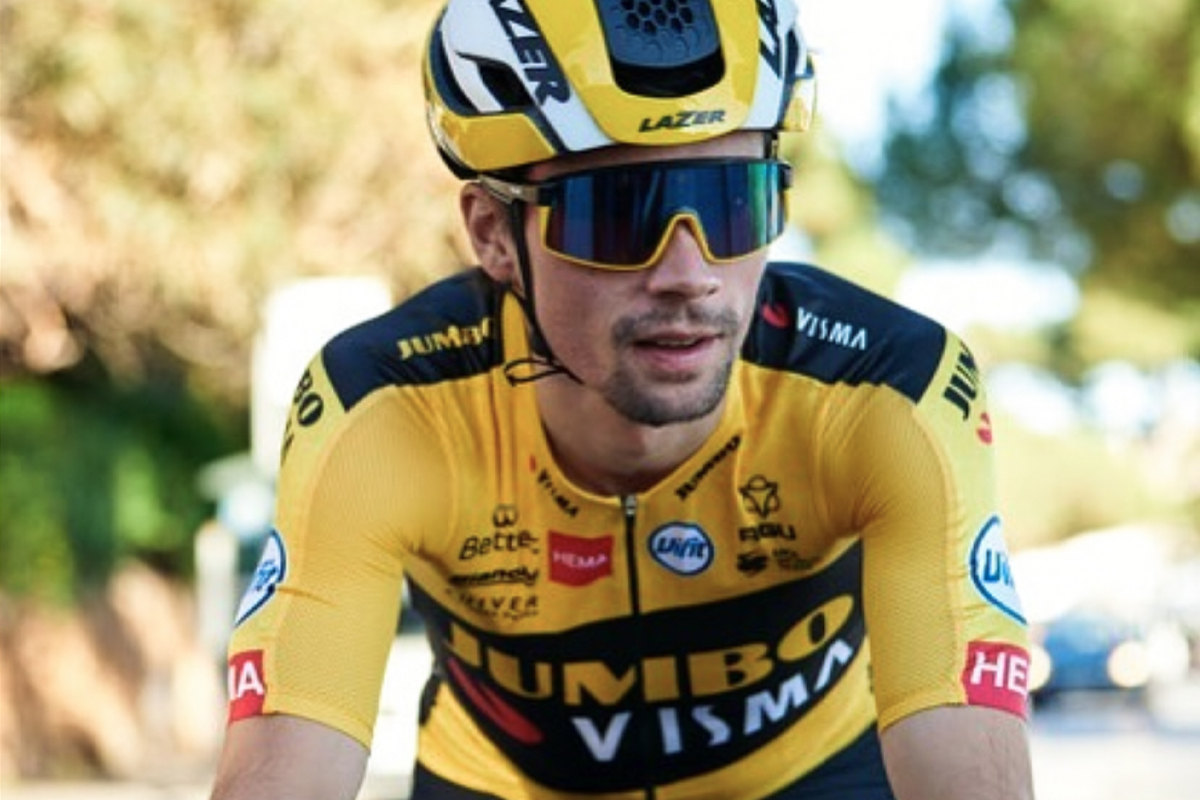
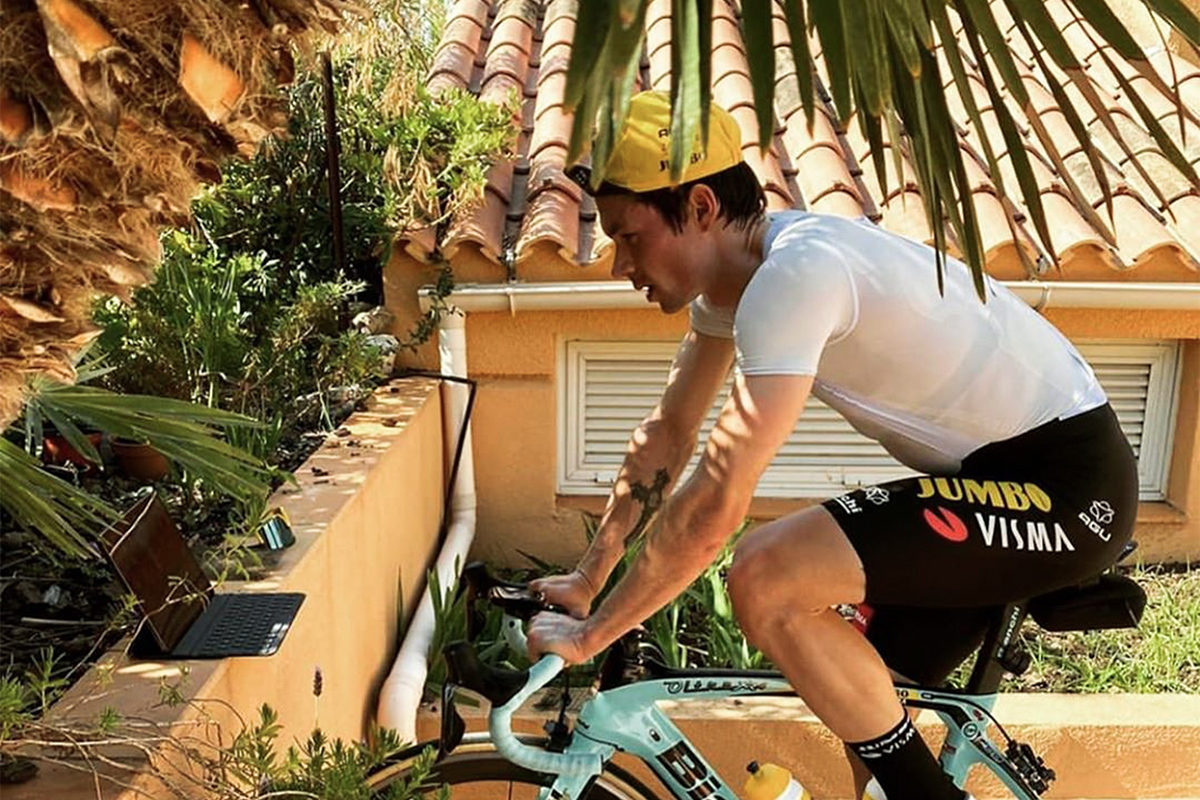
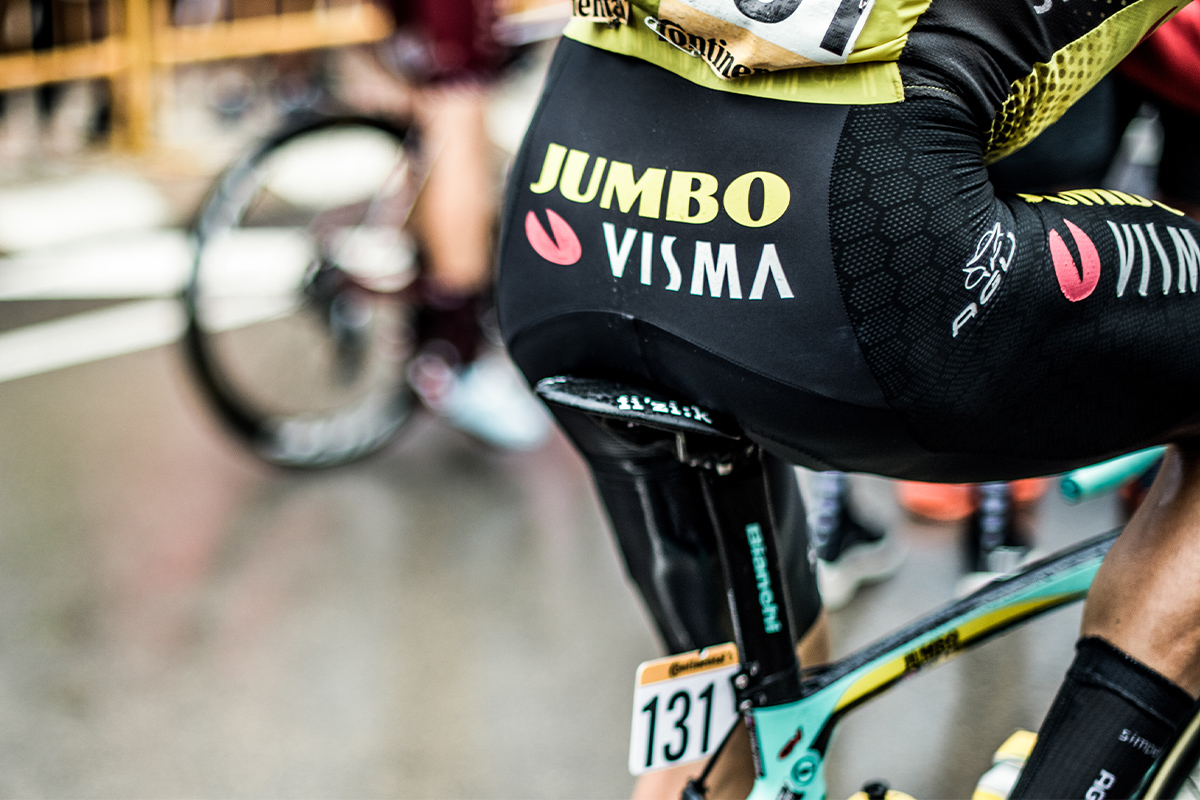
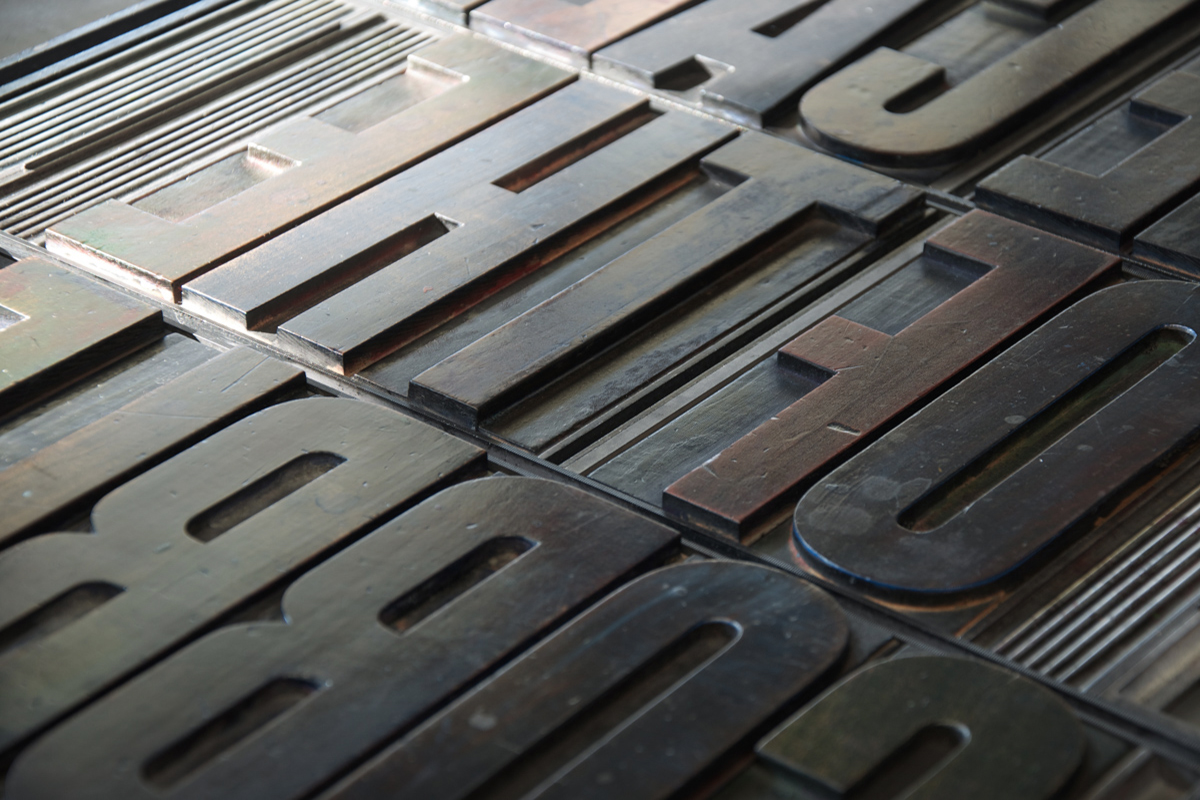
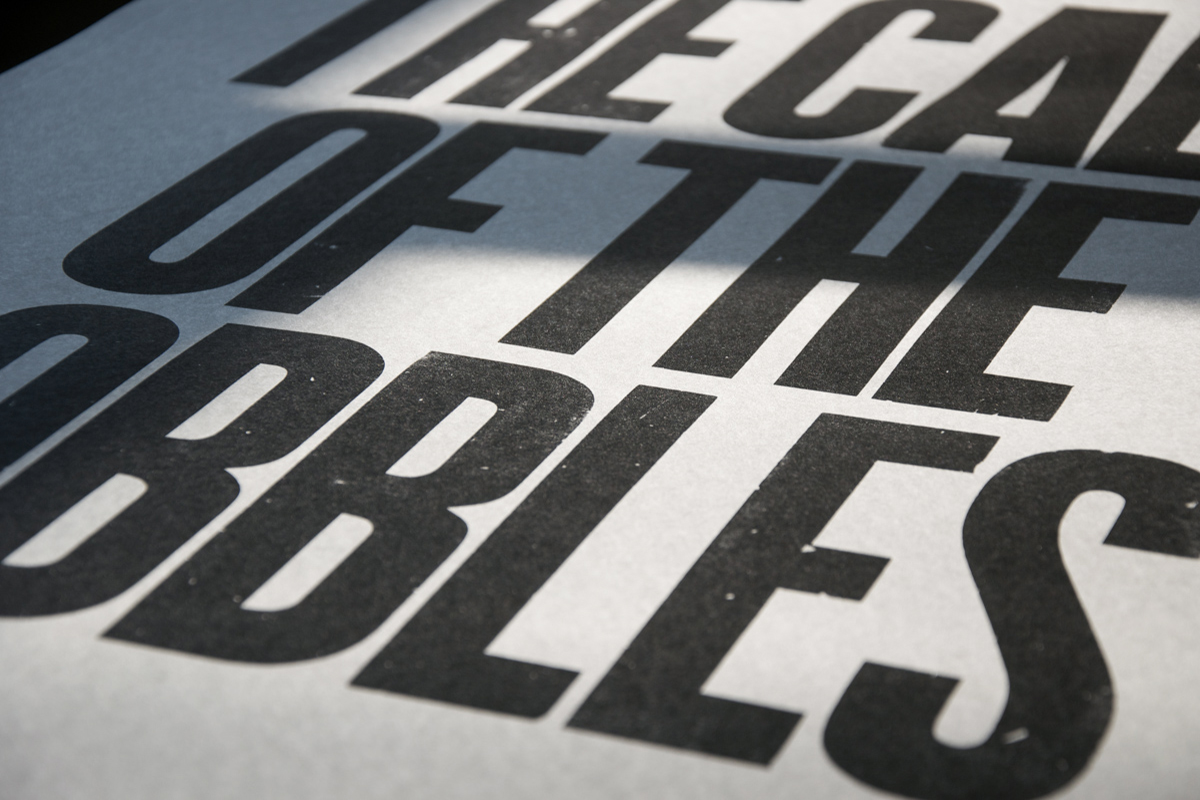
PRINTING TRADITIONS
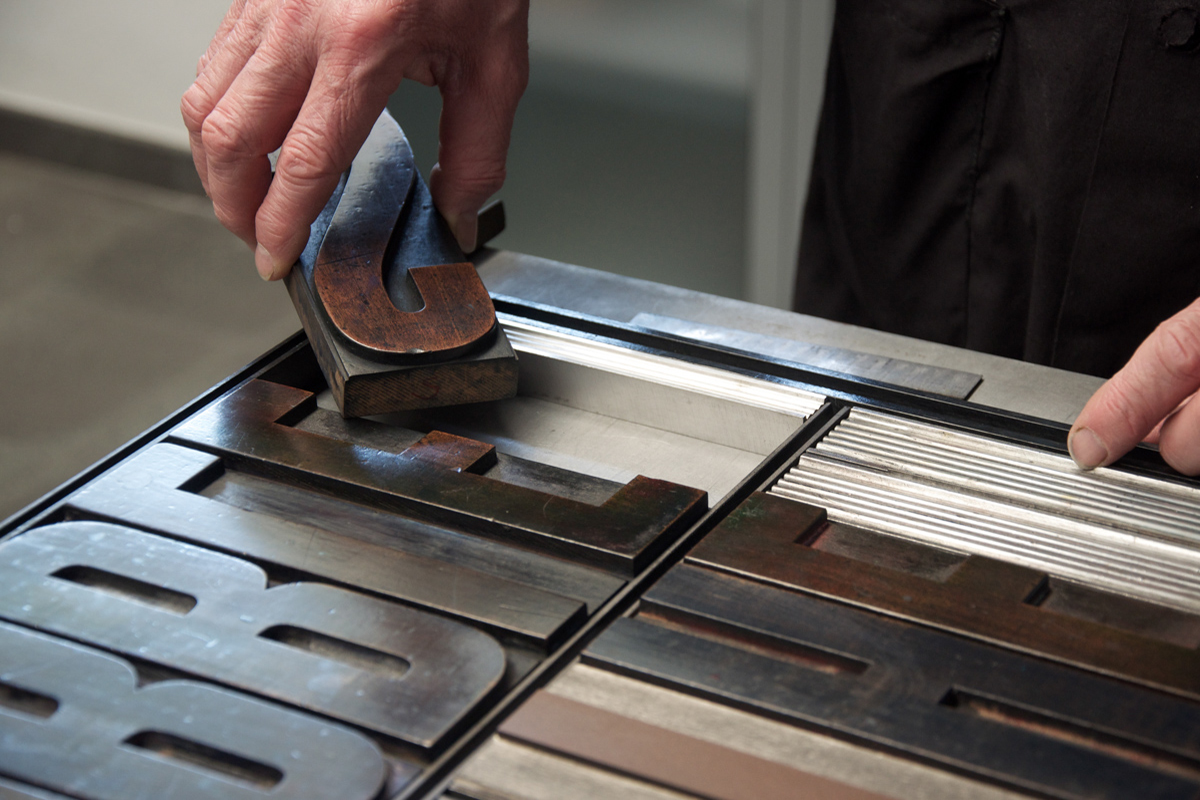
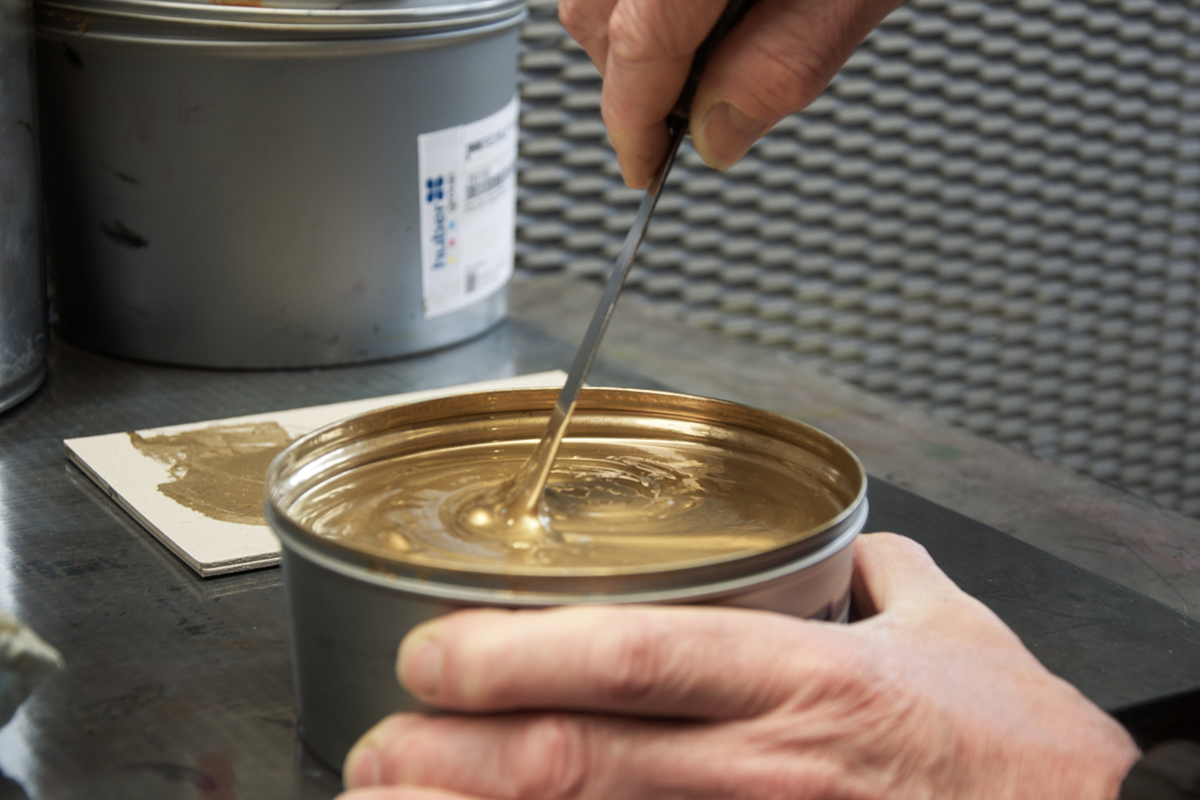

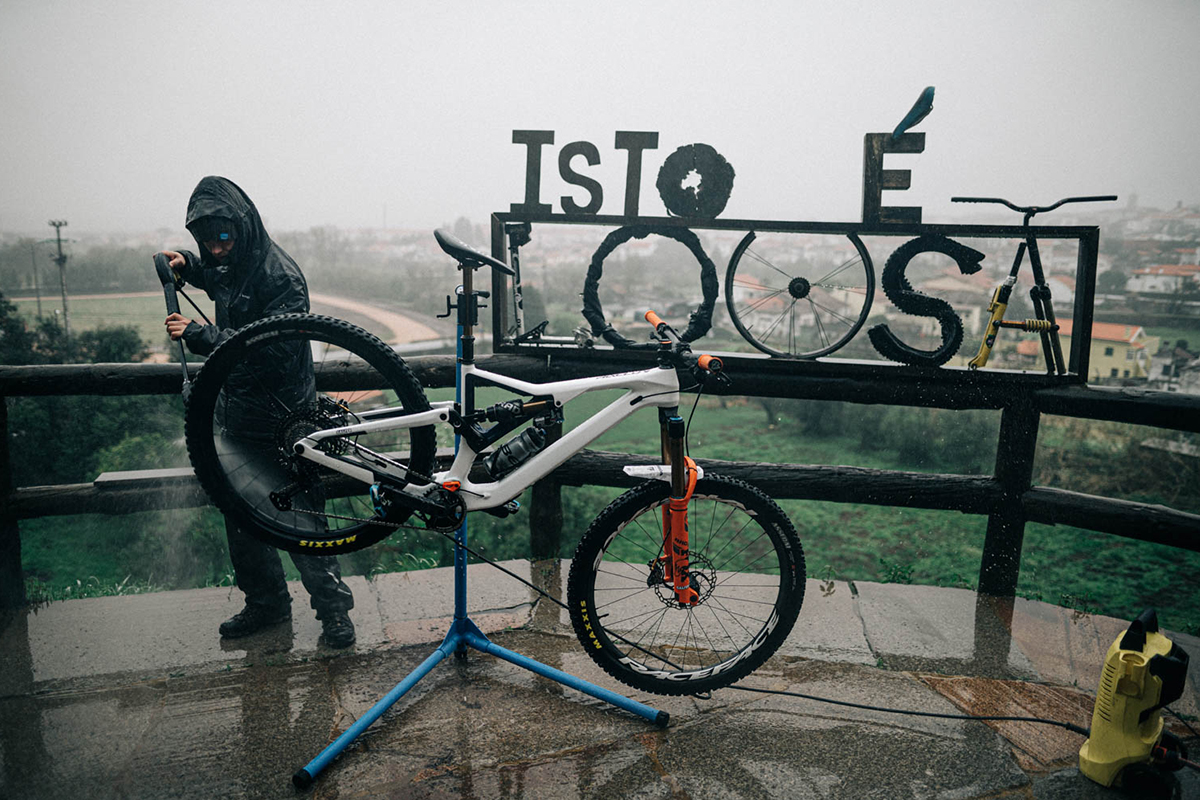
TESTING THE NEW KIT!
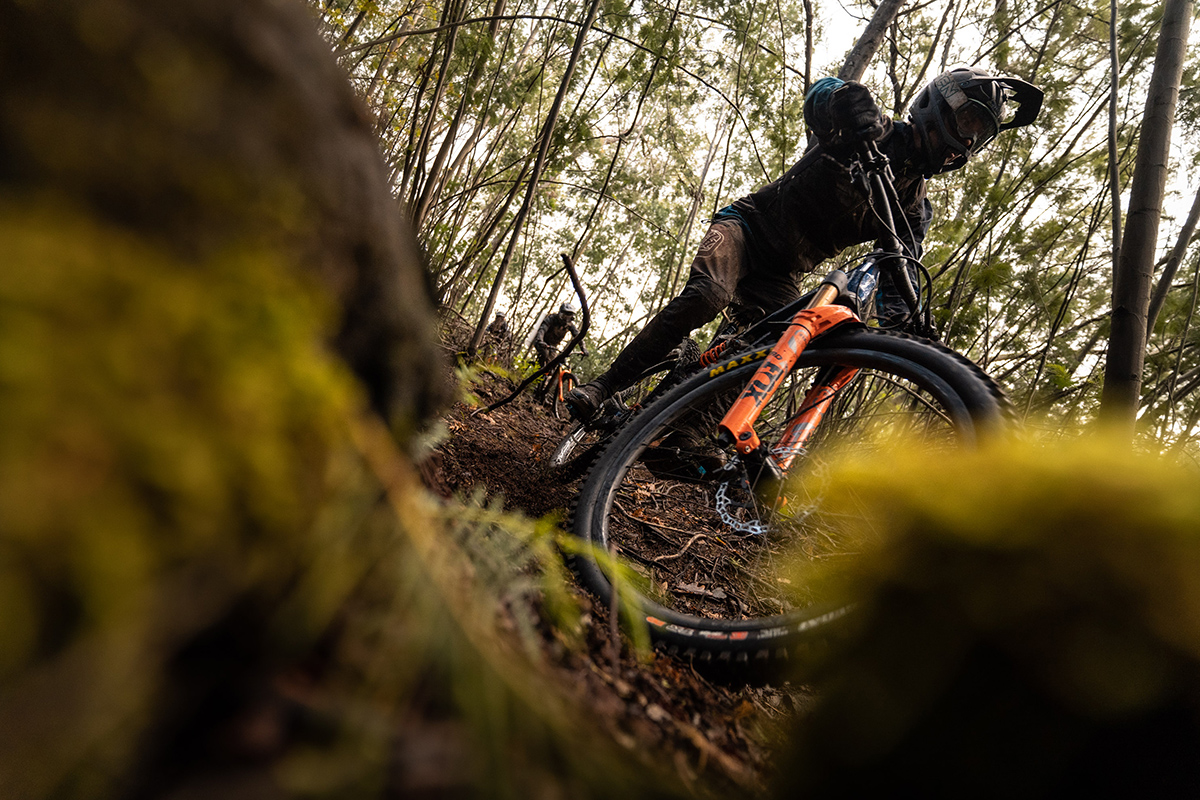
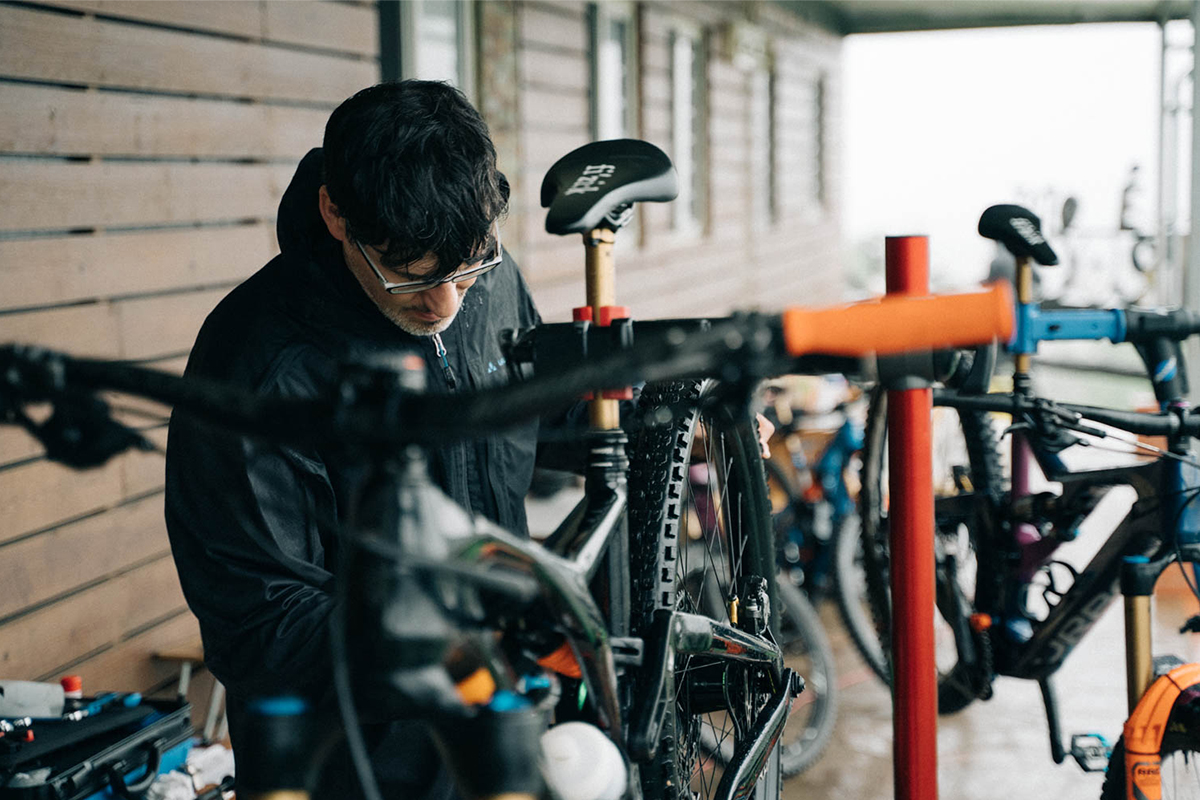
PRE-SEASON TEAM-BUILDING
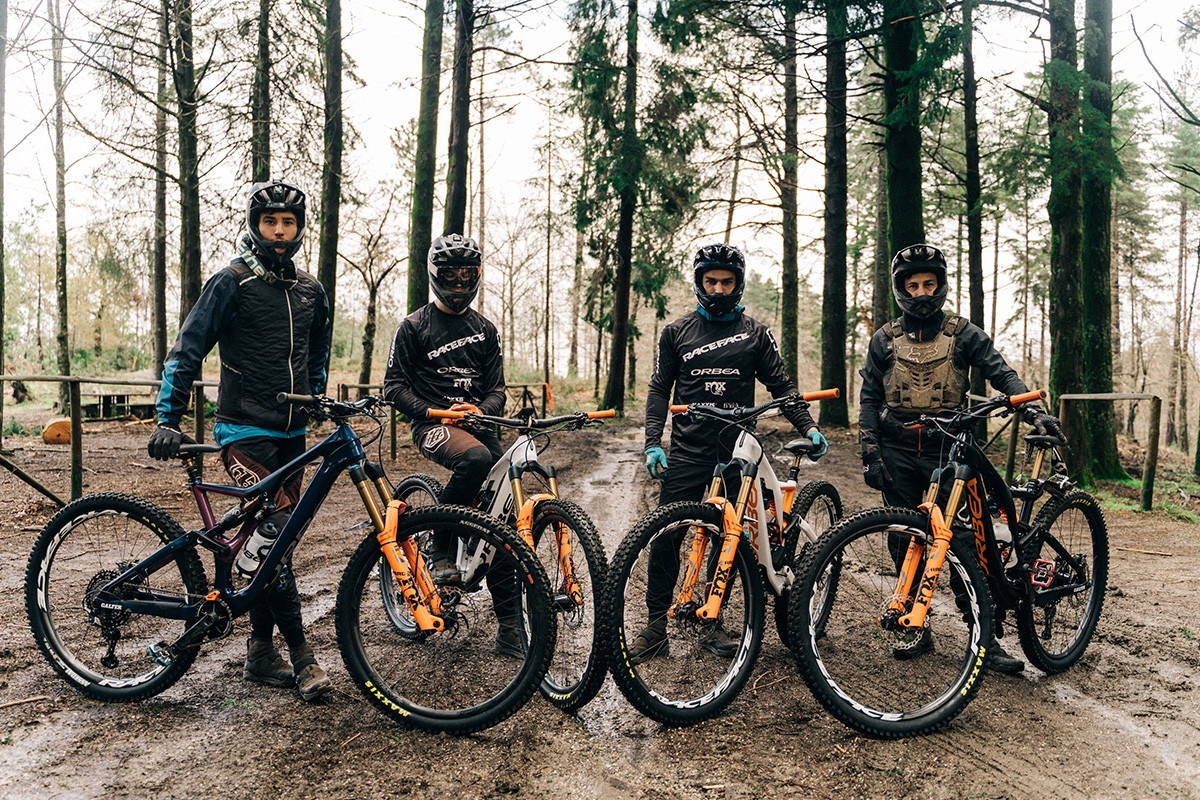
MAKING THE BEST OF THE LOCKDOWN
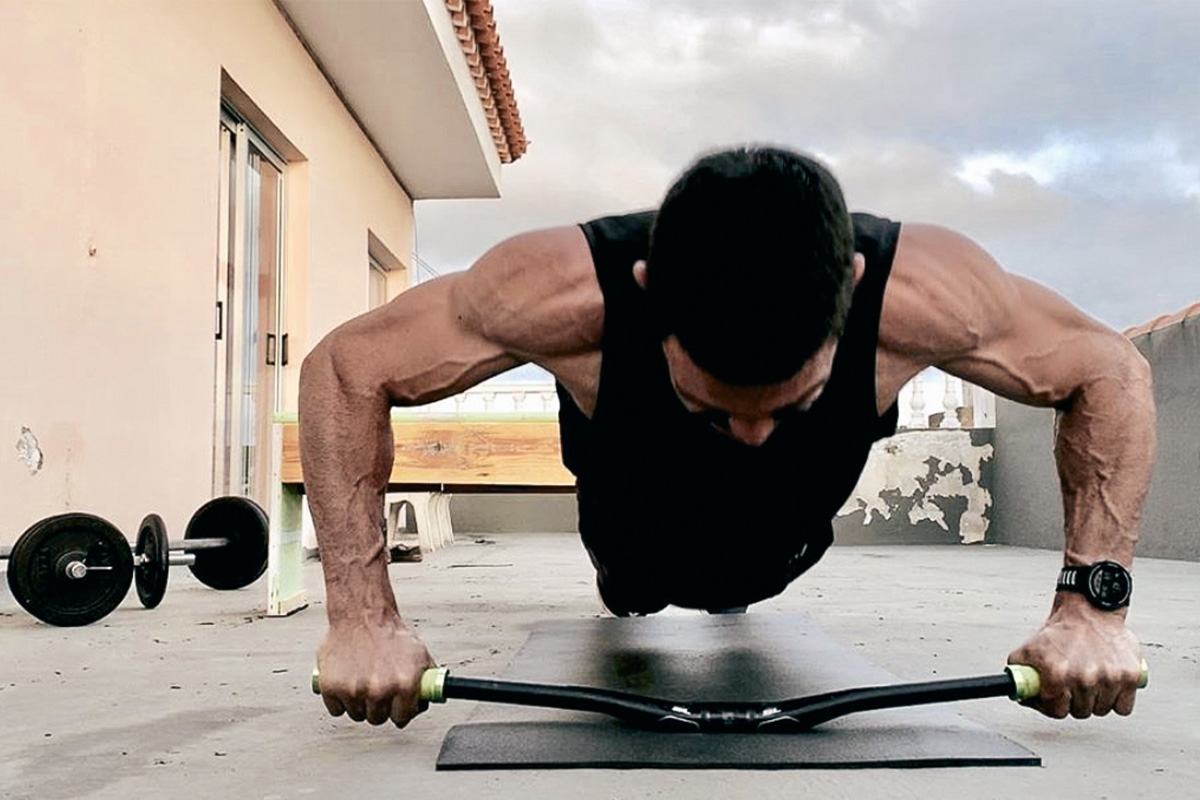

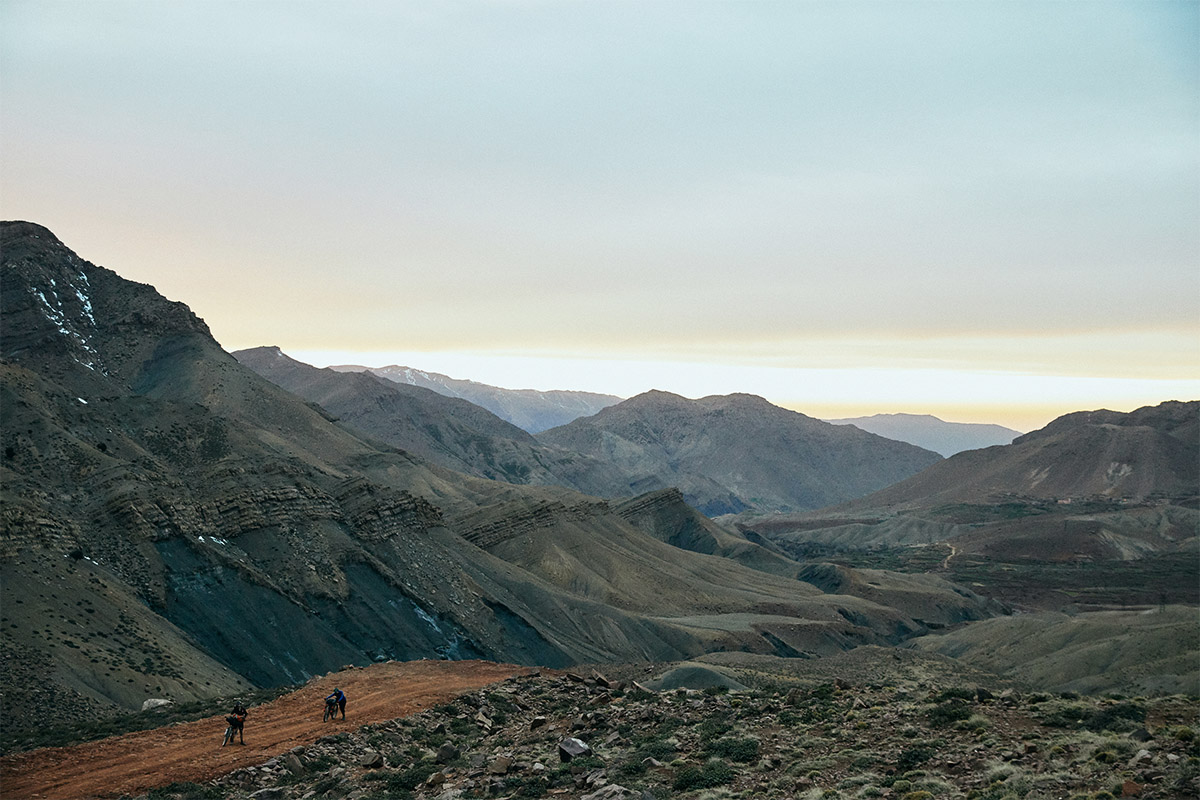

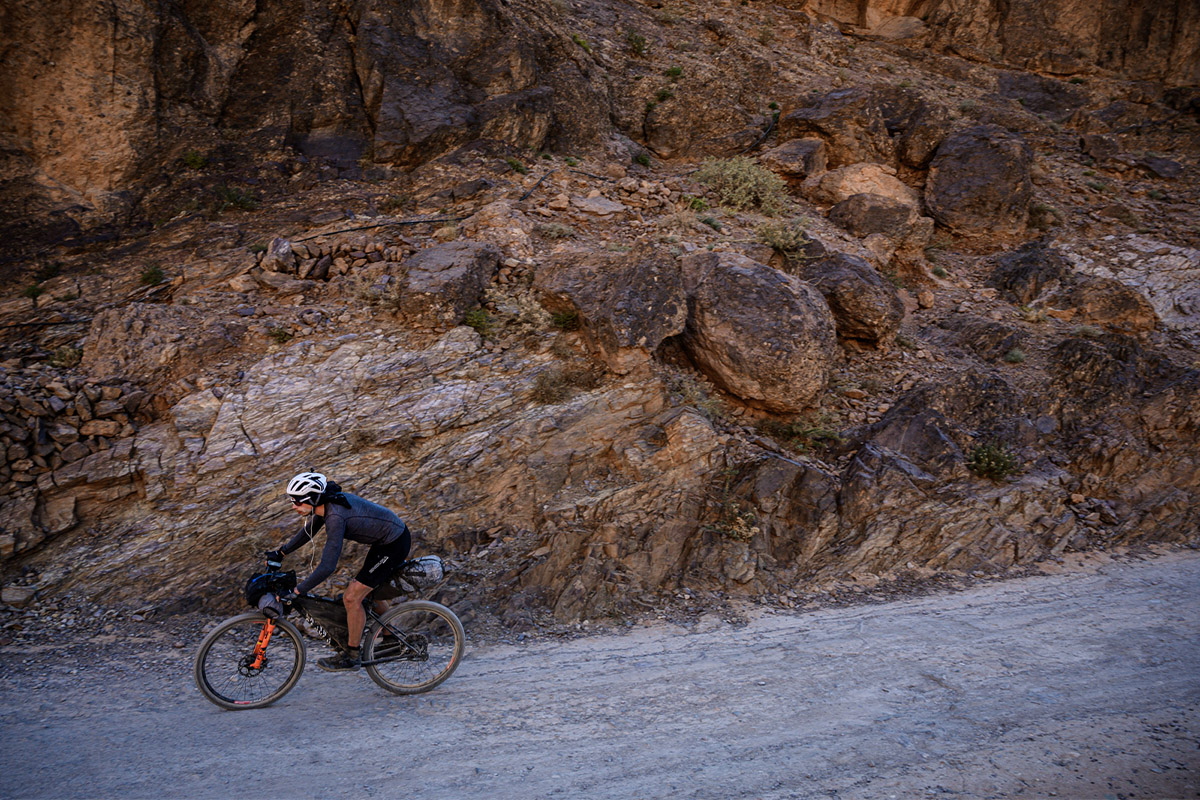

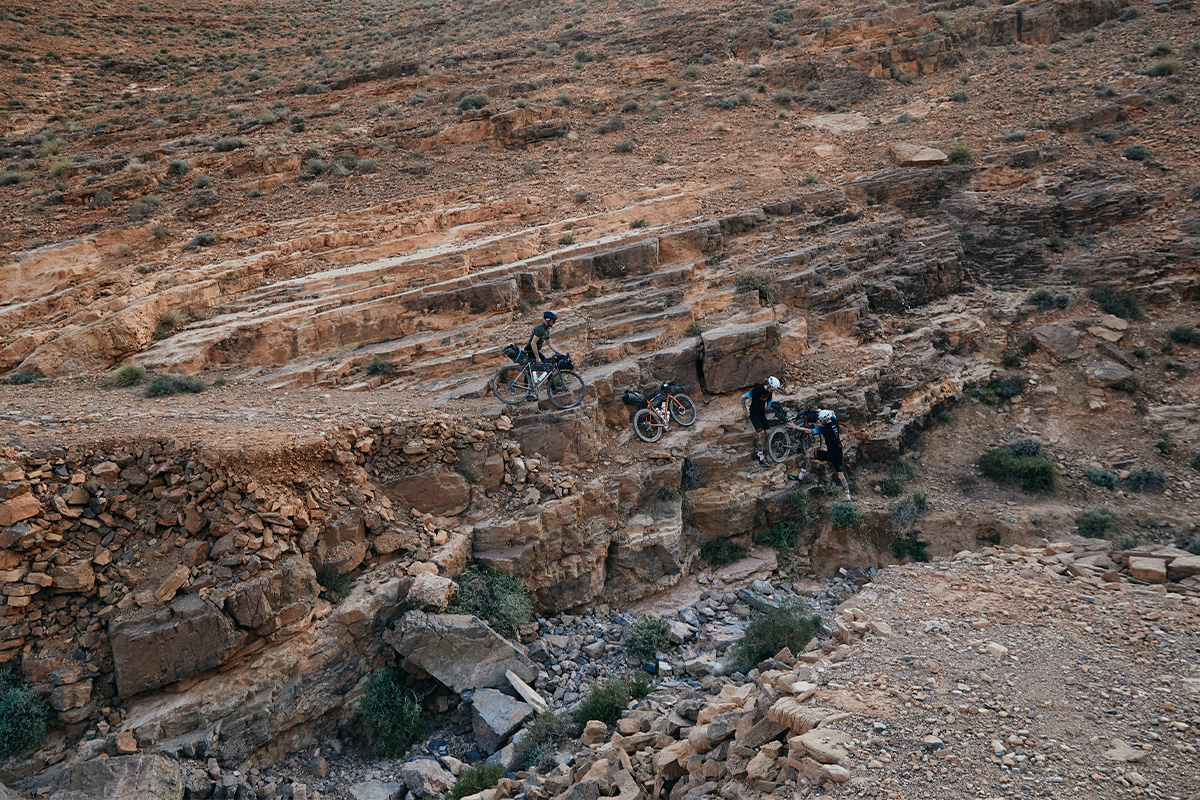
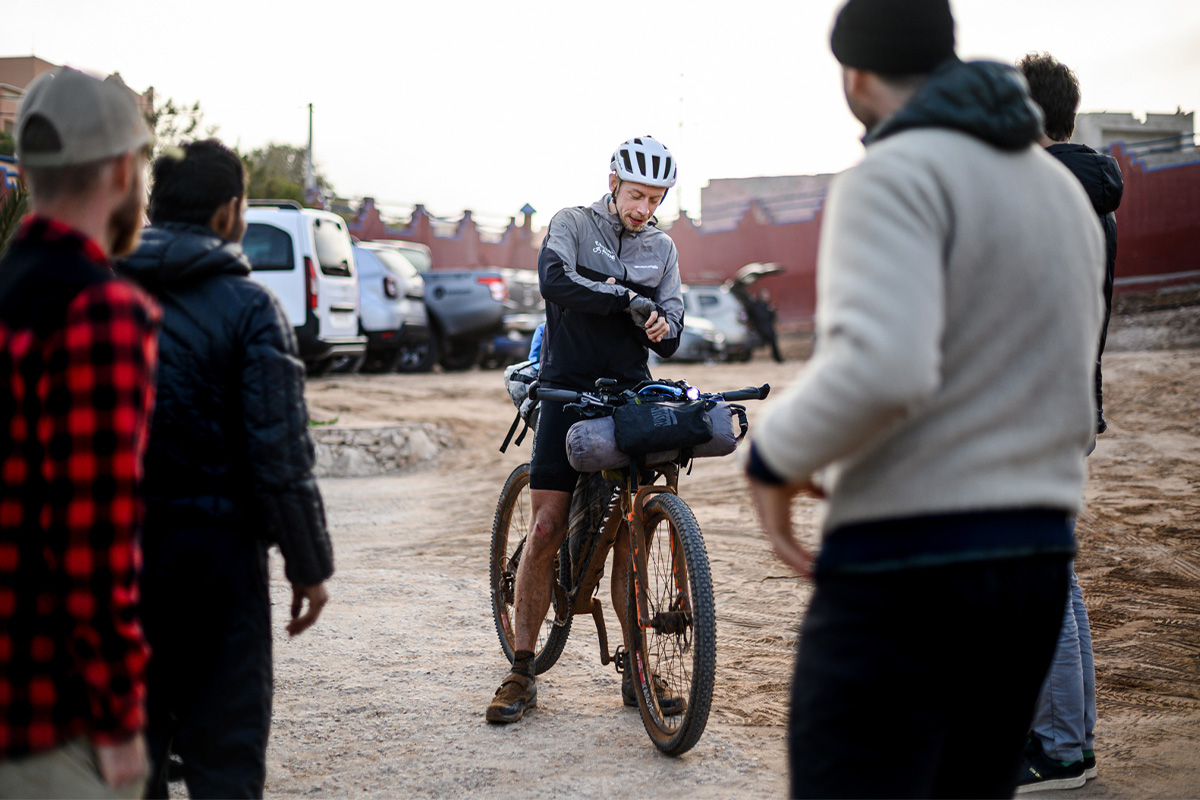
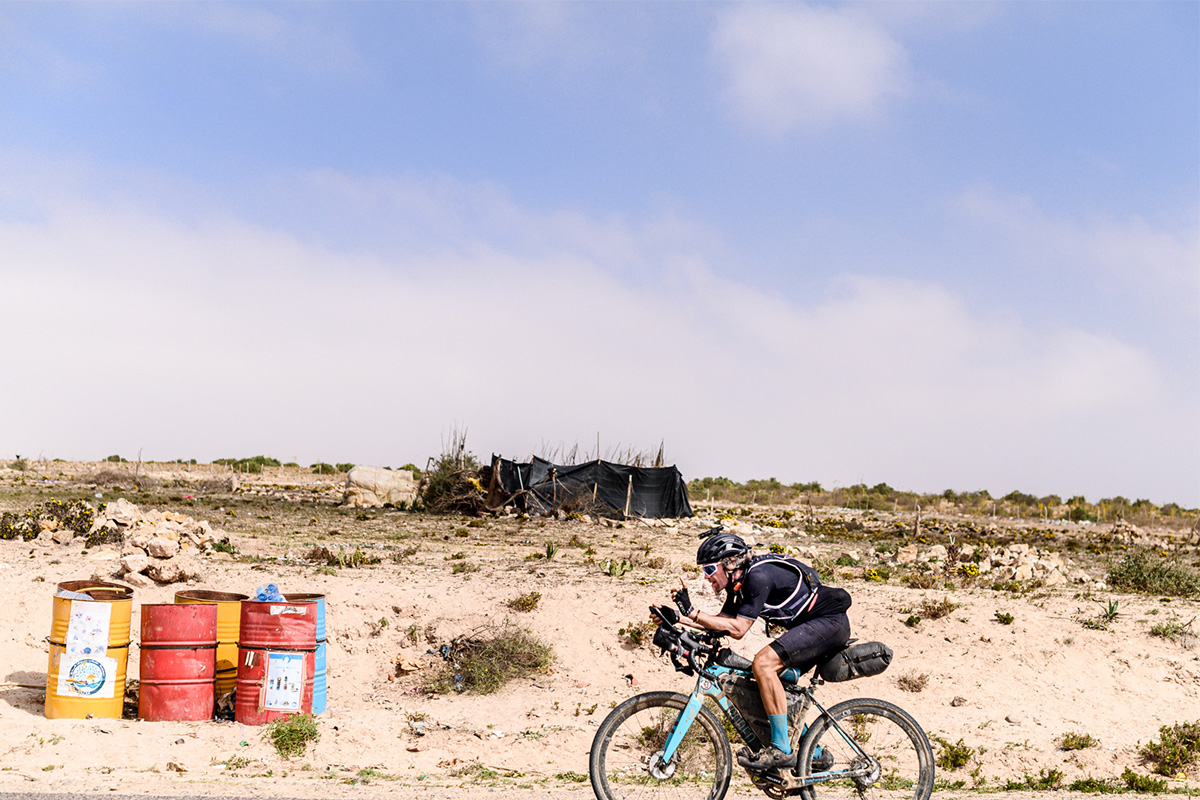
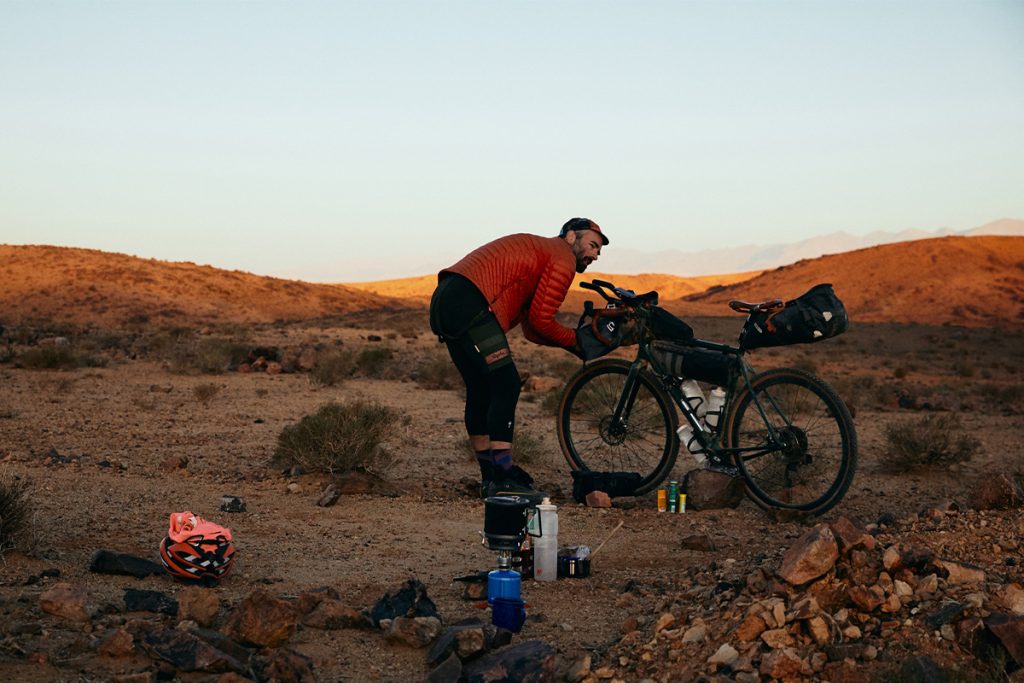

THE GLACIAL AGE

BACK IN TIME
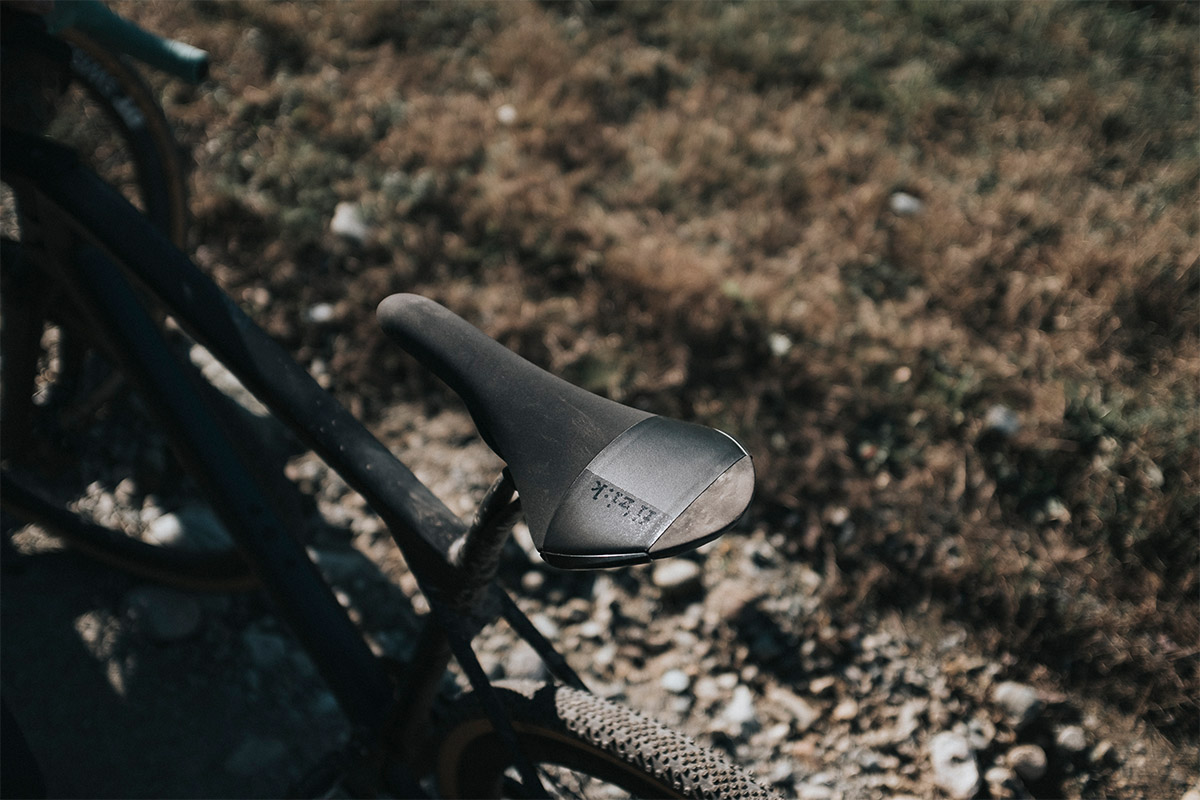
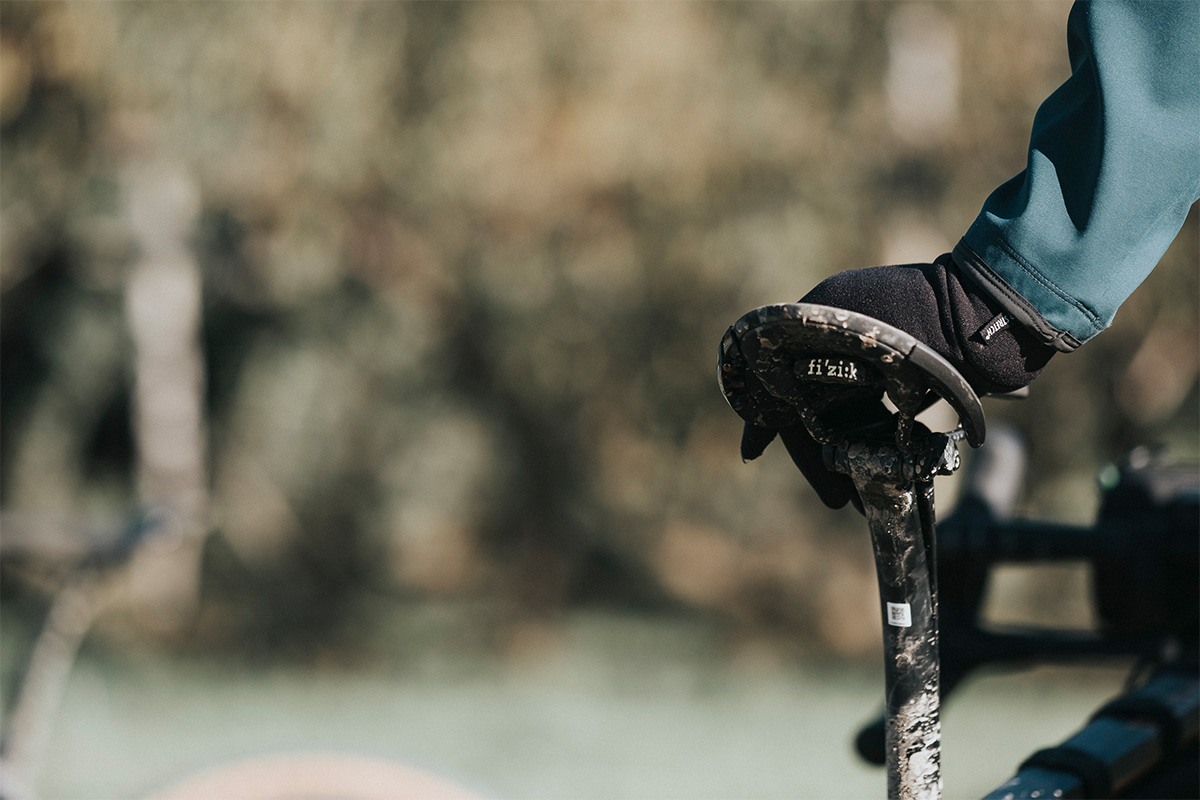
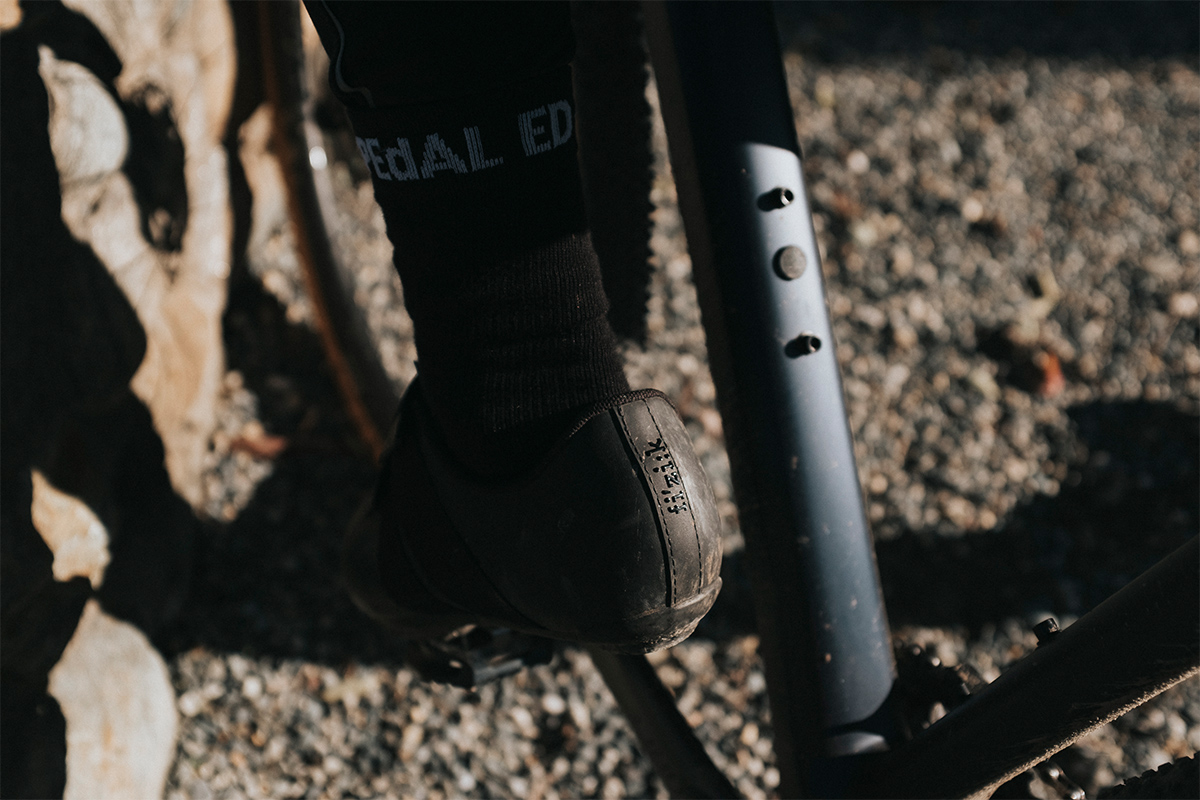
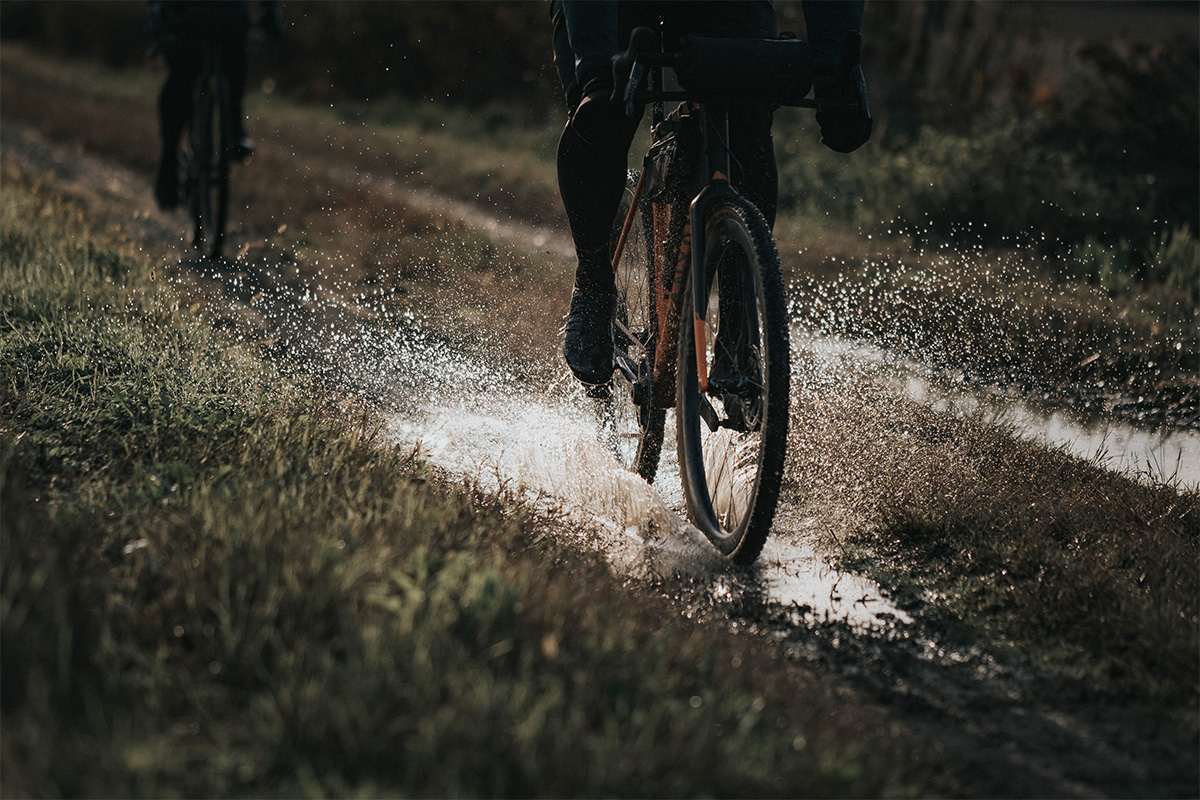
TOUGH TERRAIN

Photographs: ©Daniele Molineris / Alvento magazine